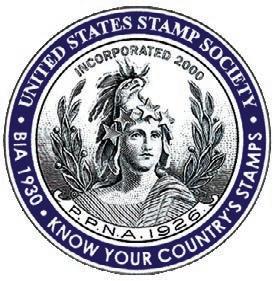

The United States SPECIALIST
New Rotary Press Press Maps—Part I
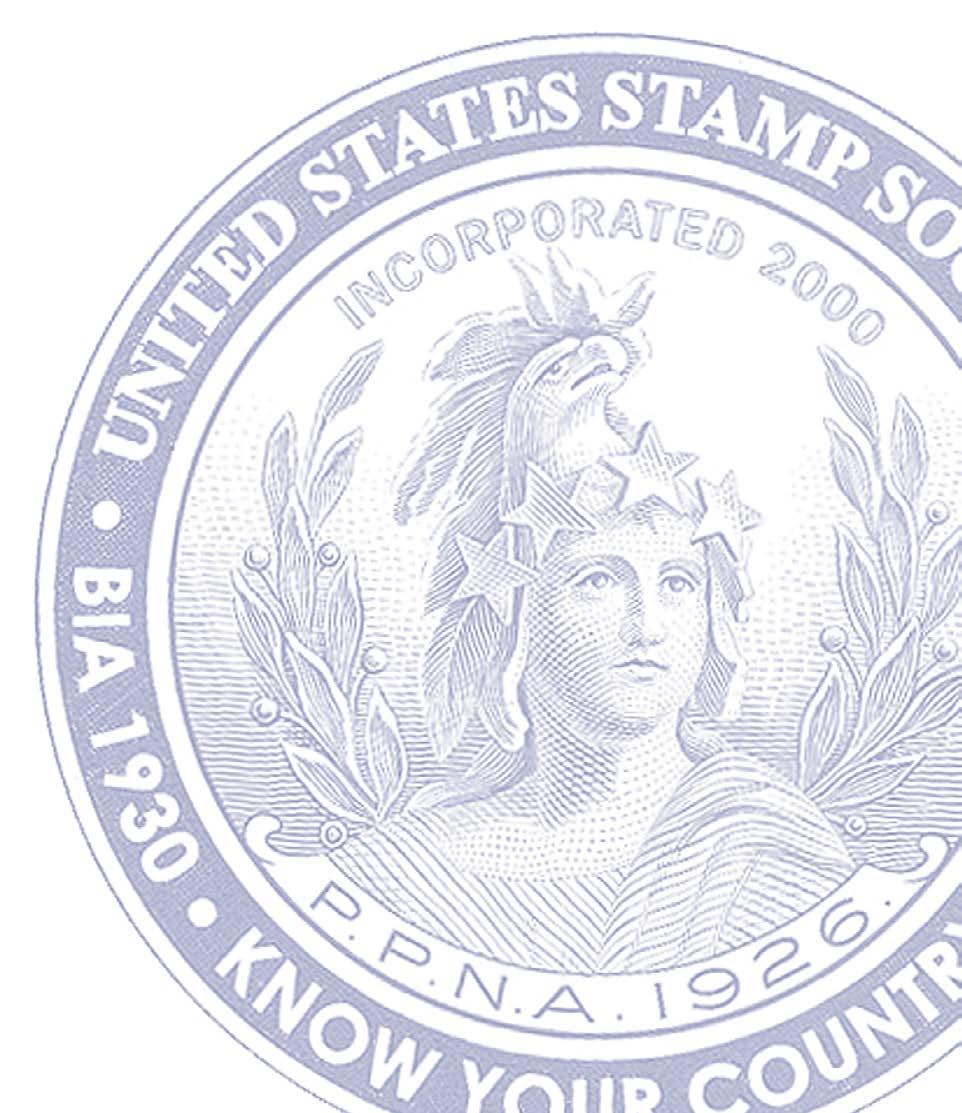

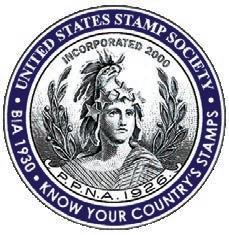
The United States SPECIALIST
the journal of the United States Stamp Society VOLUME 96, NUMBER 3 Ma Rch 2025 W h OLE NUMBER 1141
An association of collectors to promote the study of all postage and revenue stamps and stamped paper of the United States and US-administered areas produced by the Bureau of Engraving and Printing and other contract printers. American Philatelic Society Affiliate No. 150
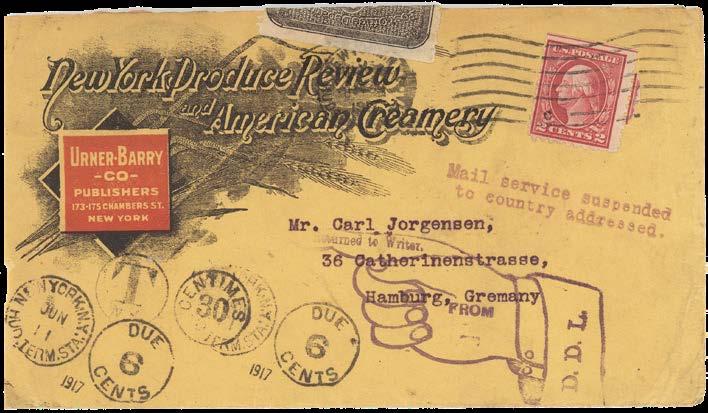
103 New Perspectives on Rotary Coil Stamp Production Via “Press Maps” (BEP Fiscal Years 1914–25), Part I by Nancy Robinson, PhD and James Robinson
113 WWI Suspension of Mail to Germany: An Update by Jacob Alex Klerman
122 Great Americans Issue Part X— The Cody Stamp and Changes at the BEP by Jay Stotts
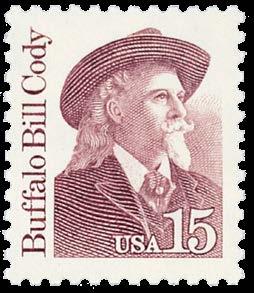
FDR and the 1944 Steamship Savannah Commemorative by Paul M. Holland
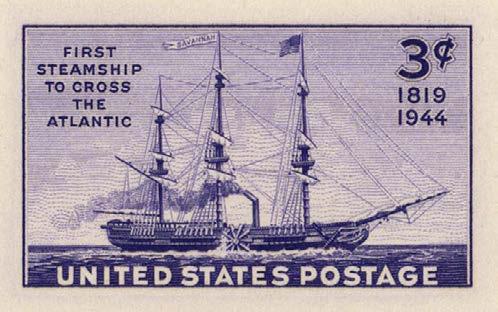
Andrew S. Kelley, Editor 9038 East 25th Drive Denver, CO 80238 (720) 839-5848
email: editor@usstamps.org www.usstamps.org
Manuscripts, publications for review, and all advertising including classifieds, should be sent to the Editor at the address above.
Forms close on the 20th of the second month preceding the month of publication, as February 20 for the April edition.
The United States Specialist (ISSN 0164-923X) is published monthly January through December by
the United States Stamp Society, Inc., P.O. Box 1602, Hockessin, DE 19707-5602. Membership in the United States $25. North America $40; all others $65. Single copy $2. Periodical postage paid at Hockessin, DE, and at additional entry offices. Printed in USA.
Copyright ©2025United States Stamp Society, Inc. All rights reserved. Opiwnions expressed by authors are their own and do not necessarily reflect those of the United States Stamp Society, its officers, or staff.
Correspondence concerning business affairs of the Society, including membership and changes in address, should be addressed to the Executive Secretary, PO Box 1602, Hockessin, DE 19707-5602.
Postmaster: Send address changes to U.S.S.S., P.O. Box 1602, Hockessin, DE 19707-5602.
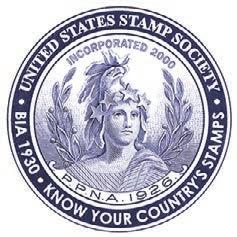
The United States Specialist
Founded 1930 as The Bureau Specialist
EDITOR
ANDREW S. KELLEY
9038 East 25th Drive Denver, CO 80238 email: editor@usstamps.org
United States Stamp Society Bureau Issues Association, Inc.
P.O. Box 1602 Hockessin, DE 19707-5602
CHAIRMAN
Roger S. Brody
P.O. Box 5836 Somerset, NJ 08875-5836 email: brody@usstamps.org
PRESIDENT
Nicholas Lombardi
P.O. Box 1005 Mountainside, NJ 07092 email: 8605@comcast.net
VICE PRESIDENT
Jeffrey Shapiro
P.O. Box 3211 Fayville, MA 01745-3211 email: coverlover@gmail.com
SECRETARY
Joel Cohen
10703 Kings Riding Way, Unit T-1 Rockville, MD 20852-5420 email: cohenji@comcast.net
TREASURER
David S. Sugar 4045 N. Harvard Ave. Arlington Heights, IL 60004 email: david-sugar@wsdd.com
GOVERNORS
Lynn Batdorf
Kim Johnson
Mike Lampson
Leonard Piszkiewicz
James Robinson
Robert Rose
Rod Juell
Gregory Shoults
David Steidley
Jay Stotts
Steven Unkrich
EXECUTIVE
SECRETARY
Robert Rufe
P.O. Box 1602
Hockessin, DE 19707-5602 email: execsecretary@usstamps.org
— Committees — AWARDS
Denise Stotts
email: stottsjd@swbell.net
BOOKLETS & BOOKLET PANES
Michael O. Perry
P.O. Box 1194, Rainier, OR 97048 email: MOPerry@mac.com
DURLAND EDITOR
Kim D. Johnson
310 E N 3rd Street, Georgetown, IL 61846 email: westhome1@aol.com
ESSAY-PROOF
James Patterson
1850 North Central Avenue, No. 1400 Phoenix, AZ 85004 email: jhpatterson@yahoo.com
EXHIBIT PDFs
Chris Steenerson
P.O. Box 1818
Westminster, CO 80038-1818
email: Chris@RxStamps.com
FARLEY ERA
Paul M. Holland
email: pholland.thorleaf@gmail.com
FOURTH BUREAU ISSUE
Jay B. Stotts email: stottsjd@swbell.net
LIBERTY SERIES
Roland Austin
P.O. Box 2641, Stillwater, OK 74076-2641 email: RAustin13@aol.com
MARGINAL MARKINGS
Chris Steenerson
P.O. Box 1818 Westminster, CO 80038-1818 email: Chris@RxStamps.com
MODERN POSTAL HISTORY
Douglas B. Quine P.O. Box 153, Bethel, CT 06801-0153 email: usss2010@quine.org
PLATE NUMBER & CHECKLIST SERVICE
Kim D. Johnson
310 E N 3rd Street, Georgetown, IL 61846 email: westhome1@aol.com
PRECANCELS
Lynn R. Batdorf 6005 Kingsford Road, Bethesda, MD 20817 email: hollykids@comcast.net
PRESIDENTIAL ERA
Jeffrey Shapiro
P.O. Box 3211, Fayville, MA 01745-3211
RECRUITING
Steven Crippe
P.O. Box 308, Palmer, TX 75152 email: scrippe@gmail.com
REVENUE ISSUES
Peter Martin
P.O. Box 6074, Fredericksburg, VA 22403 email: pmartin2525@yahoo.com
SECOND BUREAU ISSUE
Nicholas Lombardi
P.O. Box 1005, Mountainside, NJ 07092
VENDING AND AFFIXING MACHINE PERFORATIONS
Dan Ryterband 40 Carolyn Place, Chappaqua, NY 10514 email: djryterband@fwcook.com
WASHINGTON-FRANKLIN
HEAD ISSUES (Co-Chairmen)
Greg Shoults 11248 Frederick Lane Twinsburg, OH 44087 email: coilcollector@hotmail.com
Andrew S. Kelley 9038 E 25th Dr, Denver, CO 80238 email: stamps@andrewkelley.net
WEBMASTER
Mike Lampson
P.O. Box 471963, Charlotte, NC 28247 email: lampson@usstamps.org
— Study Groups — DUMMY STAMPS
Terry R. Scott
P.O. Box 10406, Napa, CA 94581 email: terryrscott@comcast.net
FIRST BUREAU ISSUE [open]
LUMINESCENCE
Wayne L. Youngblood 705 Forest Glen Circle, Prairie du Sac WI 53578 email: wystamps@gmail.com
OVERRUN COUNTRIES SERIES
Thomas Schilling
P.O. Box 432, New Lisbon, NJ 08064-0432 email: cbtkschilling@yahoo.com
PROMINENT AMERICANS AND AMERICANA SERIES
Ron Blanks
P.O. Box 9282, Chesapeake VA 23321 email: rblanks_stamps@yahoo.com
REGISTERED MAIL
Mike Ludeman
P.O. Box 2024, Denton, Texas 76202-2024 email: mike@ludeman.net
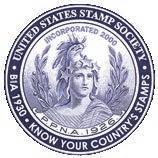
Contributor Recognition
We gratefully acknowledge the following members who supported our Society during the 2025 dues cycle by making donations in excess of their annual $25 dues. All such donations are appreciated and greatly enable the Society’s work.
Regular Members donations of up to $29
Anonymous
Thomas Anderson
Henry Arking
Joseph C. Banchak
Anna R. Bates
Ronald L. Beck
Cameron Betts
Gary Blair
John H. Bloor, MD
Stephen Breitkopf
Stephen J. Bukowy
Alan Bush
Samuel L.M. Cole Jr.
Victor Collinino
Roger D. Curran
Glen J. DeSalvo
Steve Dulaney
Cheryl Ganz
Joseph Giacalone
Earl O. Gibson
Gene M. Holgate
Timothy Howard
Richard B. Hunter
Steve Jacobson
Job van Keulen
Keith Lichtman
Gary S Loob
Edwin H. Lugowski Jr.
Keith Maatman
Steve McCarthy
Arlene Merves
Robert Mittelstaedt
Joseph A. Monaco Jr.
David Mower
Rodolfo C. Narvaez
Gary Overfield
Scott A. Pendleton
Gene Pica
Chris Principe
M. Jack Reinhard
Frank Roche
Brian Santaniello
Dr. David Schneider
Bill Schultz
Martin Schwab
James J. Semones
Eugene Setwyn
J. Thomas Showler
John S Shue
Mark J. Smith
Fred Steinberg
Lee J. Storhaug
Frank S. Tolford
Carol Anne Visalli
Ron Westerman
Richard M. Wrona
Sustaining Members donations of $30 or more
Anonymous
Joan Anderson
Joan Anderson
Richard Andrews
Paul W Anthony
Jason Ares
Joseph Arsenault
Dr. Steven J. Berlin
Page E. Berry
Barbara Bilson
Timothy Buchholz
Eric E. Chaulsett
Dominick L. Cinti
David Cogar
Ron Couchot
John Cowan
Dennis Dajczak
Patrick J. Davis
David A. Dean
Jason DeLeau
Gus Dimino
Paul Donovan
W. Douglas Drumheller
Richard Emanuel
Dave Ennist
Richard Farrelly
Merle Farrington
Michael Feinstein
Gary Gilliland
Bonnie Goble
Stephen J. Goceliak
Daniel Gunn
Bruce L. Hecht
George F. Heinrich, MD
Liz Hisey
Dalton Hoffman Jr.
Peter F Hoffman
Allen Cory Hofsetz
Robert D. Hohertz
Robert Holcomb
John Howker
Thomas M. Jacks
Eric Jackson
Kevin Keane
Ronald Keyser
Keith Knutson
Scott Laidlaw
Cyrus C. Lauriat
Jim Leischow
Mark E. Lescher
Egidio Maas
Henri J. Mackor
James MacLellan
William Matthews
James McAndrew
Gary W. McClarran
William McGill
David E. McGuire
Manes Merrit
Eric Meyermans
J. Bruce Miller
Wayne Morrow
John Nocchiero
Northwest Phil. Library
Gary Olson
Timothy O’Shea
Robert Peck
Scott Pelcyger
George Perkins
Thomas Phillips
Sheldon R. Phinney
Thomas J. Piper
David Porch
William H. Powell III
David J. Regan Jr.
Craig Ruyle
Col. Robert F. Schlegel Jr.
Robert Schlesinger
Robert Schoenstene
Judson Schultz
Cuthbert Scott
Terry R. Scott
Joseph F. Serota, MD
David Sieroty
William Sihler
Carl Smith
Randall J. Smith
Albert Smith III
Dennis Solheim
Herbert C. Spomer
Yellowstone Stamps
K. David Steidley
Henry-York Steiner
Sam Stratton
Ronald R. Tellier
Hank Thode
Steven G. Thomson
Mark D. Tomasko
Larry D. Travis
Michael S. Turrini
Steven R. Unkrich
Charles A. Van Pelt
Karl F. Vinsek
Larry Walling
Bruce Wasserman
Stephen White
Elizabeth Yee-Hess
Mitchell Zais
Max E. Zollner
Contributing Members donations of $50 or more
Anonymous
Greg Ajamian
Steven Altman
Richard M. Bendix, Jr.
Richard Bielefield
Leslie E Butler
Francis Caprio
Alfred Carroccia
Dennis Cipollo
Dane Claussen
Joel Cohen
Robert J. Courdway
Frederick E. Coveler
Raymond Doberneck
John P Duffy
Andrea Edmondson
Gordon Eubanks
James P. Ferrigno
Owen Ford
Ralph Freudenthal
Trevor Fried
Dr. Richard Friedberg
Jan Garfinkel
Charles G. Groneman
Lawrence Haber
Dave Hamilton
Charles W. Herren
Joseph Kelley
William Kolodrubetz
Michael Lampson
James E. Lee
Michael Manthe
Frank Martin
Bill McCloskey
Scott Mix
Thomas Molchan
Chris Nardo
Marshall Northington
Charles J. O’Brien
Richard Peterson
Robert L. Pettinato
Leonard Piszkiewicz
Steven V. Reeder
David A. Reyno
Patrick W. Rice
James Robinson
Melanie Rogers
Margaret Rowles
David Rueppel
Phil M. Sager
Alexander J. Savakis
Steven E. Scarbrough
Gary L. Schwieger
John B. Shely
Robert D. Simpson Jr.
Dr. Harold M. Sollenberger
Salvatore Spagnola
Robert J. Sperberg
Roger S. Brody
Randall M. Brooksbank
Lewis Burchett
Michael F. Burke
Andrew J. Burkman
Dennis Callison
Alfred E. Cambridge
Todd Caron
Charles E. Chambers
The Twelfth International Philatelic Exhibition of the United States proudly presented by
Nicholas A. Lombardi
David Marino
Winston Marshall
Edward A. Martin
Evan Matthews
Michael McCollum
Thomas McFarland
Bill Mitchell

Patron Members donations of $95 or more Anonymous
Ralph Nafziger
Joseph Napp
Harold B. Nogle Jr.
David Novak
Thomas H. Phillips
Thomas Pollard
Robert G. Rose
Robert G. Rufe
Daniel Ryterband
May 23–30, 2026 at the Boston Convention & Exhibition Center at the Boston Seaport
Jack Andersen
Lynn R. Batdorf
John M. Bleecker Jr.
Eric S. Borsting
Catherine Boyer
Edward Grabowski
Carlin Gregory
J. Robert Hamill
Douglas Horka
Kent L. Johnston
Martin Joyce
Donald R. Kurki
David W. Lentz
Wade E. Saadi
Ralph F. Schrack Jr
Scott A. Shaulis
Jay B. Stotts
Mark Taylor
Robert G. Thompson
John Ur
• The Boston Convention and Exhibition Center is located fifteen minutes from Boston Logan International Airport. It is ten minutes from South Station and Amtrak Acela Express to New York City and Washington DC.
John W. Wagner
Michael Wilson
Bernard Wojnowski

• All show hotels will be within walking distance.
The Twelfth International Philatelic Exhibition of the United States proudly presented by
Boston 2026 World Stamp Show, Inc. Boston 2026 World Stamp Show, Inc.
• In a 352,000 square foot contiguous exhibition area, BOSTON 2026 WORLD EXPO will be hosting a large dealer and postal administration bourse, as well as a large society presence and hundreds of meetings/events.
May 23–30, 2026 at the Boston Convention & Exhibition Center at the Boston Seaport
• There will be a competitive exhibition of approximately 3,500 frames, plus other special/court of honor exhibits, as well as a large literature competition.
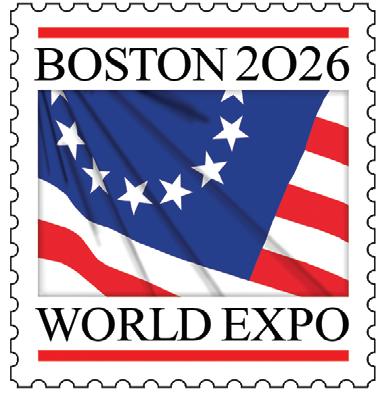
• The Boston Convention and Exhibition Center is located fifteen minutes from Boston Logan International Airport. It is ten minutes from South Station and Amtrak Acela Express to New York City and Washington DC.

Repair of the “Lipstick on Shirt Front” Plate Flaw
The December 2024 Specialist contained an informative article authored by Jay Stotts on A Press dollar sheetlets of the Great Americans Issue. Page 559 of the issue describes the so called “Lipstick on Shirt Front” plate flaw which occurs on position 6 of a pane of 20 of the $1 Johns Hopkins issue. This glaringly obvious defect is illustrated in the Scott Specialized Catalog of United States Stamps & Covers and listed under the heading for No. 2194, $1 Intense Deep Blue, large block tag, dull gum, this being the first of five listings for this issue. The July 16, 1990, edition of Linn’s Stamp News reported that the BEP removed the sleeve from service and repaired it. Jay’s article states that the flaw was repaired “presumably by burnishing out the old image and transferring a new image onto the sleeve in its place.” I disagree with this presumption.
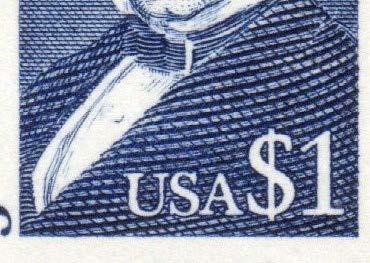
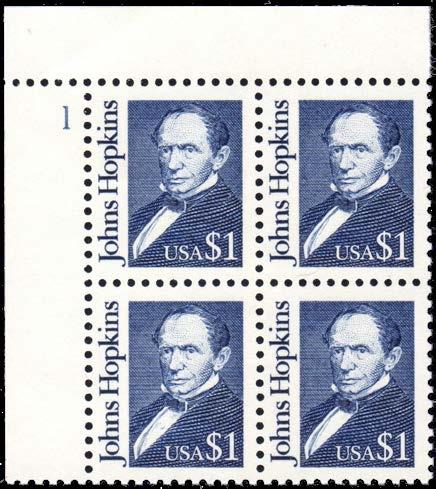
Repaired “lipstick” flaw (lower left subject in block at bottom; closeup at top).
The “Lipstick”, or double gouge plate flaw, is not restricted to the first printing of this issue. It appears “full strength” on the first printing, the intense deep blue (#2194). However, it also is evident, to a lesser degree, on the same position in the pane of the second printing of this stamp. This would be the Deep Blue, overall tagged, dull gum release of 1990, Scott #2194b. Traces of the gouges remain, as well as recut lines in the shirt front. The illustrations nearby show these features. This would indicate that the damaged area alone was burnished out and the affected lines of the shirt front recut. If the old image was entirely replaced, then any traces of the gouges would not appear, nor would there be any reason to recut lines.
Both the large block tagged 1989 issue (#2194) and the overall tagged 1990 reissue (#2194b) were printed from cylinder #1, produced on the BEP’s A Press. Any evidence of the flaw would not be seen on the last three printings of this issue (Nos. 2194d, e or f) as these prephosphored paper versions are all from cylinder #2, products of the C Press. The Scott Catalog would benefit collectors of this issue by including a mention of the reworked flaw under the listing of 2194b. —Rob Loeffler, USSS #14421.
Correction—Certificate Number for 535 “EDU”
The article “The ‘Earliest Documented Use’ of Scott 535 Was Certified in Error” in last month’s Specialist lists the wrong expert certificate number for the featured cover. The certificate number is 147514, not 147517. The author regrets the error.

New Perspectives on Rotary Coil Stamp Production Via “Press Maps” (BEP Fiscal Years 1914–1925), Part I
by Nancy Robinson, P h D and James Robinson USSS # 12386 (James Robinson) | m jsr.new2019@gmail.com
Value Scott # Plate Pair
Date To Press Period
1¢
2¢
Figure 1. Press Map snippet for BEP FY 1924 with seven “small” rotary coil presses (A-G) operating.
Wallace Cleland’s publication of plate printing records for the rotary postage stamp presses is an important data source for philatelic researchers.1 These research papers, which are organized numerically by plate number, allow ready access to production information for any specific plate. However, a new method for analyzing rotary stamp production within the context of all plates at press during a specific period provides additional informative data that is not easily accessible from Cleland’s numerically organized data. When plate information is instead organized chronologically, according to the first date in the to press period, new perspectives on the entire production at the Bureau of Engraving and Printing (BEP) become evident. In this two-part series, the power of organizing the printing plate information chronologically is demonstrated using a novel tool called a “Press Map” (Figure 1). In lieu of pages of typed lines of information, Press Maps graphically illustrate press plate printing data during a specified time period, organized chronologically by at press information. Months or years of production can be studied with a few full-scale maps.
Rotary Press Printing at the BEP
Part I of this series describes Press Map construction and the basic utility of this tool. Part II presents an example study illustrating several new perspectives on rotary coil stamp production via analysis of Press Maps covering the increasing coil production by the BEP during fiscal years 1919 to 1925.
Term
To Press Period
Sent to Press or To Press
At Press
Overlap Period
On Press
Working Days on Press
Returned To Vault
Definition
The data recorded in the plate print history for each plate number that describes the date on which the plate was signed out from the plate vault and the date it was subsequently signed back into the plate vault.
Removal of a plate from the plate vault and transport to the press room.
Another term used to describe the to press period. It is the time a plate is in the press room including when it is waiting to be mounted on a press and the time it is mounted on a press.
The time that a plate is at press and waiting to be mounted on the next available press.
The time during which a plate pair is mounted on a press.
The on press period minus nonworking days (Sundays and holidays).
Transport of a plate from the press room to the plate vault.
Canceled Destruction of a plate.
Working Days
Abortive Run
Days that the BEP was in operation: Monday through Saturday. Sundays were non-workdays as were the official holidays.
Short on press time frame after which one or both plates are either paired with a new partner plate or canceled. Often at least one plate was damaged and canceled.
Table 1. Glossary of Terms Used for Describing Press Map Information.
Collating Print Histories Chronologically: Working with Cleland’s Data
Cleland’s research papers are organized by stamp issue with the plate numbers listed from lowest to highest number. They are not chronological. This arrangement facilitates locating information for a specific plate, which was the original intent. To describe the various data presented, he developed a specific terminology. Table 1 defines Cleland’s terms and additional terminology used in describing production information.
Figure 2 is an excerpt taken from B.I.A. Research Paper #10 (see Ref 1 above). The blue outlined information is the data used for chronologically ordering Plate 13505. The companion plate data (plate 13506) lists identical information (green outline). Figure 2 illustrates a simple sequence of plate usage; two consecutively numbered plates that were sent to the presses one time and canceled the day after the to press period ended. However, plate print history is rarely so simple.
Figure 3 shows the complex print history for plate 10090. This plate was paired with three different companion plates and was sent to press six times (plate 10104, plate 10088,
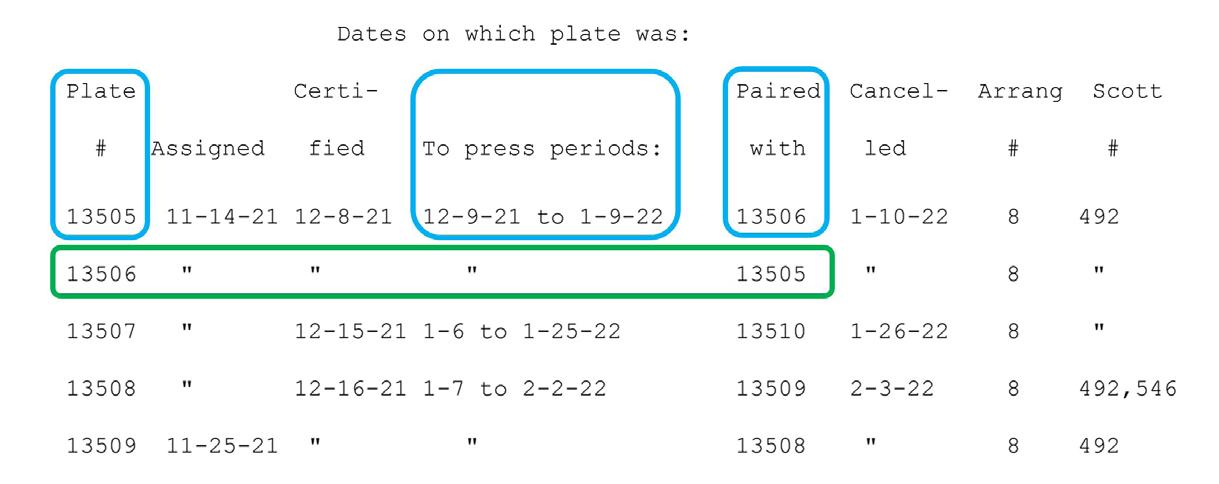
2. Portion of USSS Research Paper
Information used to organize the data chronologically is contained in the blue and green rectangles.
and plate 10640 shown in blue rectangle located at the right in Figure 3). The first to press period lasted only two days with companion plate 10104, after which plate 10090 was returned to vault. Looking at the data for plate 10104 (the first of 10090’s companion plates, green rectangle in Figure 3), this plate’s at press period is 11 days (versus the 2 days for 10090), and it was paired with two plates during this time frame: 10090 and 10087. Figure 3 illustrates how difficult it is to gain a perspective on plate utilization through time using typed data sequenced according to plate number.
But in an early study of his own compiled work, Cleland was the first to suggest that the print history data could be reorganized to illustrate the chronological sequence. In his 1989 article, Printing History of Early Plates Made Only for Coil Stamps, 2 Cleland described organizing plate print histories by to press date. In his analysis of the chronologically organized data, Cleland made the following observations concerning “method of plate usage:”
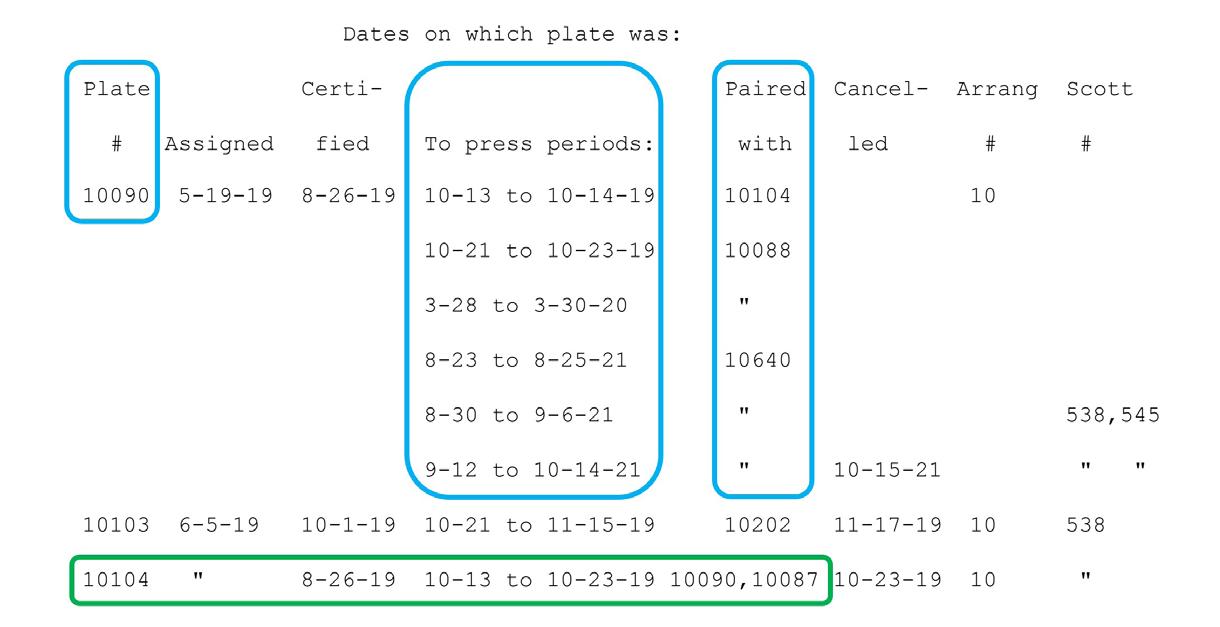
3. Portion of USSS Research Paper #10. Information used to organize the data chronologically is contained in the blue and green rectangles.
Figure
#10.
Figure
• Plates were generally sent to the press room one to three days before the plates they were replacing arrived back at the vault: this practice limited idle press time.
• Infrequently, more than one set of plates were sent at the same time as replacements for a production run nearing its end.
• Unsuccessful attempts to run plate pairs occurred.
• Plates sent to press multiple times typically ran with the same companion plate. However, when a pair appeared to have abortive runs or when one of the plates was damaged, another plate number would be substituted, and the new pairing used to print stamps.
Most of these assertions were based on Cleland’s familiarity with the data. A different researcher could not “see” how and when various events occur. Nor could they easily discern all stamps and catalog numbers impacted. Press Maps fully illustrate the concepts and all occurrences, in addition to revealing new information, which can only be discovered via mapping.
Cleland also recognized that by organizing the press pairings chronologically, the plate pairs could be correlated to the presses in operation. Thus, he could assign plate pairs to specific numbered presses and determine when new presses were added to the production floor. In doing so, he provided a timeline for the introduction of the first three coil stamp (small) rotary presses at the BEP between 1912 and 1915. Table 2 summarizes the results.
Time Period No. of Presses
June 12, 1912–April 9, 1915 1
April 10, 1915–June 6, 1915 2
June 7, 1915–April 30, 1917 3
Table 2. Number of Coil Stamp Rotary Presses in Operation: June 1912 through April 1917.
Cleland’s conclusion that three coil stamp rotary presses were operating by June 1915 is supported in the BEP Director’s annual report for fiscal year (fy) 1915 (July 1, 1914, through June 30, 1915).3 On page six of the report, under the section titled Rotary Plate Printing Presses, the Director writes, “Three rotary web plate printing presses are now in successful operation printing and gumming postage stamps . . . .” Table 2 dates and Cleland’s data extend to April 1917, because the upper limiting parameter of his study was plates numbered up to 8,000.
The First Three Coil Presses: Demonstrating the Utility of Press Map Diagrams
Organizing plate pair information chronologically by the to press data has extraordinary analytical power. Past examples of chronologically organized plate information appear in The United States Fourth Bureau Issue 1922–1938. 4 However, when presenting the results in a tabular format, such as was done in Cleland’s Table II,5 it is difficult to interpret the data quickly. Press Maps provide a clear visual representation of chronologically organized plate print data. To illustrate this point, Figure 4 reproduces a portion of Cleland’s Table II.
Figure 5 Panel A is an abbreviated Press Map. The map converts the information in Cleland’s Table II into a bar graph showing the rotary coil print plates sent to press between February 19 and June 29, 1915. Presses are numbered and color-coded for easy
Press 1
6-2 to 12-4-12
Table II
Printing History of Rotary Coil Plates Below 8000
Arranged by Printing Dates
Press 2
5957-8
12-12-12 to 10-1-13 "
1-6 to 2-17-14
2-16 to 10-23-14
6279-10
6856-7
10-22 to 10-23-14 7170-1
10-26 to 11-4-14 "
11-3 to 11-5-14
11-4 to 11-23-14
6856-7
7170-1
11-21-14 to 2-10-15 7174-5
2-9 to 2-11-15
6856-7
2-10 to 2-20-15 7170-1
2-19 to 3-30-15 7270-1
3-29 to 4-26-15
4-24 to 5-24-15
5-22 to 6-21-15
6-19 to 7-19-15
7-17 to 8-30-15
7230-1 4-10 to 5-19-15
7417-8 5-18 to 6-14-15
7425-6 6-12 to 6-30-15
7428-9 6-29 to 9-7-15
7468,70 9-4 to 10-11-15
8-29 to 9-9-15 7482-3 10-9 to 10-21-15
7408-9
7422-3
7427,30 6-7 to 8-9-18
7467-9 8-7 to 10-1-15
Press 3
7489,90 10-4 to 11-11-15
7502-3 11-9 to 11-18-15
7170-1
7182-3
7552-3
7433-4
identification. That is, the bars for Press 1 and Press 2 are shaded orange and blue, respectively to clearly identify the press onto which the plates had been mounted. This time frame in 1915 was selected because it encompasses when the second and third rotary coil printing presses were brought online (Table 2).
It becomes instantly clear that a press was added on April 10 because a set of plates was sent to press on this date, but the original press (Press 1) had plates mounted on it until April 26. If another press had not been added, there would have been long time periods with plates waiting for a press to finish its current plate run. Soon after the second press began producing impressions, the third press was added (shaded green) on June 7.
Panel B of Figure 5 again reproduces a portion of Table II from Cleland’s article. The data used to produce Panel A is highlighted yellow in Panel B. Comparing the appearance of the raw tabular data presentation of Figure 4 to that of Figure 5 Panel B, the Panel B presentation is enhanced through the addition of lines and color-coded boxes. However, comparing the Press Map in Figure 5 Panel A to the tabular presentation of the same information in Panel B, the power of utilizing Press Maps to organize and present this information is apparent. As per Panel A, it is easy to recognize when new presses are added to the press room using the Press Maps. In addition, the overlap “wait” period at the start of a press run, as first described by Cleland (bullet point one above), is also evident and has been shaded in a lighter color for emphasis.
Constructing Press Maps
Using the print history information for the rotary press coil stamp issues at press from July 1, 1914, through June 30, 1925, Press Maps for this study were constructed. In brief, the recorded to press period for each plate pair sent to the presses was entered into a Microsoft Excel spreadsheet. The data for the to press period originated from what Cleland referred to as “the vault records” which “showed the date a plate left the vault and the date it was returned from the press room.”6
Figure 4. Reproduction of upper portion of Cleland’s Table II.
Figure 5. The left panel (Panel A) shows the Press Map. Panel B, at
shows the graphed data highlighted yellow.
One extensive spreadsheet was completed for each BEP fiscal year. The BEP’s fiscal year started on July 1 and ended on June 30 of the following calendar year. For example, this means that BEP FY 1919 started on July 1, 1918, and ended on June 30, 1919. The spreadsheet printing plate data was sorted chronologically by the first date of the to press period and then manually graphed into a grid in which each cell represents one calendar day. Figure 1, a snippet from the FY 1924 Rotary Coil Press Map showing seven presses operating, illustrates the various aspects of Press Map construction described herein. For each map, the corresponding time frame is specified at the top of the grid. To the left is a list of the plate pairs at press during any point within the specified time frame. Note that a production press run that began prior to the date limits but continued production into the period is represented only by the portion of the run that extended into the period. Likewise, production runs that begin within the period but extend beyond the end-date limit are cropped to show only the portion within the date range.
Key to Color Coding
To provide an “at a glance” overview of the entire coil stamp production, the graphed at press period for each press run is shaded to match the “UPU standard” color of the stamp denomination being printed on the press (i.e., green for 1¢, red for 2¢, purple for 3¢ and so on). The overlap period is in a lighter shade of the bar color. Non-working days (Sundays) and holidays are shaded white and black, respectively.
Press Numbering
Capital letters at the start and end of each bar are used to identify the individual presses. For Cleland’s production analysis of the first three coil presses into early 1915, numbers 1–3 designated the three presses. However, Cleland wrote “…the press designations are arbitrary and at times, such as on January 8, 1917, we cannot tell which press is which (i.e., the sequence for presses 1 and 3 may be switched after January 8, 1917).”7
Cleland’s point becomes all the more evident as more presses are added. To clarify, the BEP records did not specify on which press the plates were mounted. Sometimes, press assignment is open to alternative interpretations. This situation occurred more frequently as more presses were added to the manufacturing facility and also when multiple sets of plates were sent to press within a few days of each other.
Therefore, the authors diverged from Cleland’s numbering system and instead use a lettering system to designate presses. Mapping prior to FY 1919 (starts July 1, 1918), when only three coil presses continued to run, shows years of fairly monotonous repetitions of Cleland’s presses #1 to #3 with easier-to-determine plate assignments. This study began with a focus on FY 1919 to determine when the next presses were added.
New capital letter designations A-G (seven presses) began with press A for the first rotary press coil run of FY 1919. When the study was extended forward through FY 1925, the press designations remained consistent, carrying over from map-to-map. Ultimately, when later maps were created to also cover Cleland’s early work back to 1914, the same FY 1919 letter designations were extended backward, resulting in consistent lettering for the entire duration of the study.
Parameters for Plate Assignments to Presses
As noted above, vault records include no information regarding press assignments. All press assignments were established via mapping. Ordered by priority, parameters used in making the assignment determination include:
1. The chronological date of appearances of sets of plates in the press room.
2. Limiting the overlap wait times for all plate sets sent to press at the time.
3. “Color matching” of press ink.
With regard to ink color matching, study of the early press maps revealed that “green stamp” and “red stamp” plates tended to be assigned to a press that was previously printing stamps of the same color. This convention follows a pattern observed when there was no alternative press available and is therefore thought to be a preferred manufacturing practice. The authors continued to apply the convention as a third priority.
Beyond data observation, the concept is based on the assumption that switching the ink color from red to green, for example, required a complete cleaning of the press equipment. However, the oil-based inks used for printing stamps did not dry quickly if sealed in relatively air-tight “hard surface” (metallic) reservoirs. Ink drying and water evaporation after an impression was printed on the rotary presses was a function of paper absorption, exposure to rapid airflow over the moving web, and targeted heat application. Thus, maintaining “dedicated presses” as red or green whenever possible minimized physical labor in the printing plant to constantly change colors.
As the Press Maps became more complex due to adding additional rotary presses, there were nonetheless a small number of instances when a set of plates could be assigned to more than one press if the parameters are weighted differently. For instance, an alternative analysis might apply color matching first, ahead of reduced wait time. In general, an alternative selection results in perhaps one extra day of wait time but could benefit the “production logic” by color matching. The instances where such decisions were necessary were few over the study’s 12-year span.
Ultimately, when making calculations of production quantities based on press time and historical BEP stamp shipment data, as the period under study and the number of press runs grows larger, the slight difference caused by one day more or one day less at press for one plate set becomes insignificant as a part of a large aggregate production.
Potential Sources of Error
Compiling BEP data pulled from multiple sources into the USSS print-record research papers and plate-number checklists was a monumental task. Handwritten and type-written records were transcribed and collated. The following list suggests four possible sources of error in the data sets:
1. The individual logging the information in the early 1900’s could have mistakenly recorded an incorrect date.
2. The logged information was unreadable either due to deterioration of the records or indecipherable penmanship.
3. Information was occasionally missing from the original record.
4. The individual transcribing the original record could misread the information or inadvertently record the wrong data.
As to the first error source, when dates in the original documents seemed out of sequence, Cleland noted the discrepancy in the transcribed print histories. For example, the assignment date for plates 15370 and 15371 is listed as “Note 3”, which reads: “Date of 1-22-24 is incorrect; it should be around 1-5-24” (reference 1, Research Paper #14).
When the data was unreadable (error source 2) this fact was also noted and if possible, a reasonable date is suggested. For example, the assignment date for plates 15322 and 15323 lists “Note 1” which reads: “Date unreadable; between 12–15 and 12–29–23” (reference 1, Research Paper # 14). Cleland also noted instances when information was missing.
Analysis of a Press Map may suggest the fourth source of error, a transcription error by Cleland, that might otherwise not be apparent. A few instances were discovered where the Press Map suggested strongly that a number was incorrectly transcribed. For example, if a pair of rotary plates ran only one time and only together, but the last drop dates of the two plates differed slightly, the wait time for the next pair assigned to the press might be reduced by using the earlier date. Conversely, if no new plate set was yet in the press room on the earlier date but arrived a day or two later, then the later “returned to vault” date appears to be correct for the pair about to end production. Although Press Maps may reveal the “best fit” case, allowing a decision to be made, it is important to acknowledge that unusual findings when analyzing Press Maps may be due to errors in the data from any of the sources listed above.
Finally, as another possible example of source 4 error, the authors hand-entered and later audited the data in the Microsoft Excel spreadsheets from which the Press Maps were created. Even so, within the thousands of entries, it is possible that entry errors may have been made and not detected during auditing.
Part I Conclusions
Press Maps permit the day-by-day study of BEP rotary press production for any rotary issue at any point in time. To further demonstrate this novel tool’s utility, Press Maps developed by these authors are analyzed in Part II to provide a macro-level review of coil production from FY 1919 through 1925. The example study will confirm many of Cleland’s early insights while also revealing new details and findings regarding the intensifying period of development and increasing production of rotary coil stamps from mid-1918 forward.
Part I References
1. Cleland, W. Wallace, compiler Research Papers #10, #13, and #14, which are available for download on the USSS website.
“Printing History of Washington-Franklin Flat 1c and 2c Plates and Rotary Sheet and Coil Plates”
B.I.A. Research Paper #10, June, 1995, United States Stamp Society (formerly BIA).
“Printing History of the Rotary Sheet Plates, Series of 1922,” B.I.A. Research Paper #13, May, 1997, United States Stamp Society (formerly BIA).
“Printing History of Coil Plates, Series of 1922,” B.I.A. Research Paper #14, May, 1997, United States Stamp Society (formerly BIA)
2. Cleland, W. Wallace, “Printing History of Early Plates Made Only for Coil Stamps Part II” The United States Specialist, Volume 60, No. 2, 1989, pp. 66-78.
3. Annual Report of the Director of the Bureau Of Engraving and Printing, for the Fiscal Year Ended JUNE 30, 1915, Government Printing Office, Washington D.C., 1915 p. 6.
4. Griffith, Gary, The United States Fourth Bureau Issue 1922–1938, United States Stamp Society, 2022. pp. 183, 223, 392.
5. Ref. 2.
6. Cleland, W. Wallace, compiler, B.I.A. Plate Number Checklist Plates 1-20,000 1990 Bureau Issues Association, Belleville, IL. p. 5.
7. Ref. 2 page 67.
Quality
United States Stamps (1847-1945)
Singles (mint and used)
Plate Blocks
Booklet Panes plus Complete Booklets
Price lists-$2.00 each category
Price lists free on web: www.mountainsidestampsandcoins.com
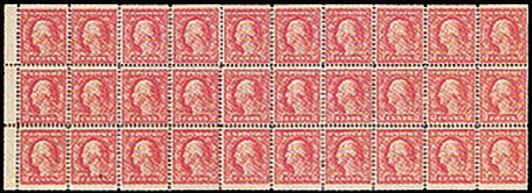
We also buy quality U.S. and foreign stamps Mountainside Stamps, Coins and Currency
P. O. Box 1116 Mountainside, NJ 07092
Tel: 908-232-0539 or 908-419-9751 E-mail: tjacks@verizon.net
2024 HEBERT’S
All New and Revised
Mint and Used Plate Number
Single Catalogue $36 postpaid
Expanded pricing, back-of-the-book, tag/paper varieties, PN/ZIP/ME types
Rick Burdsall / APNSS P.O. Box 1023
Palatine, IL 60078-1023
Precancel Stamp Society
Interested in Learning More about Precancels? Request a copy of “Th e ABCs of Precancel Collecting” and also receive a sample copy of the PSS Forum, the Precancel Stamp Society’s monthly journal. Contact: Frank Bird III, 1095 Pinellas Point Dr South,
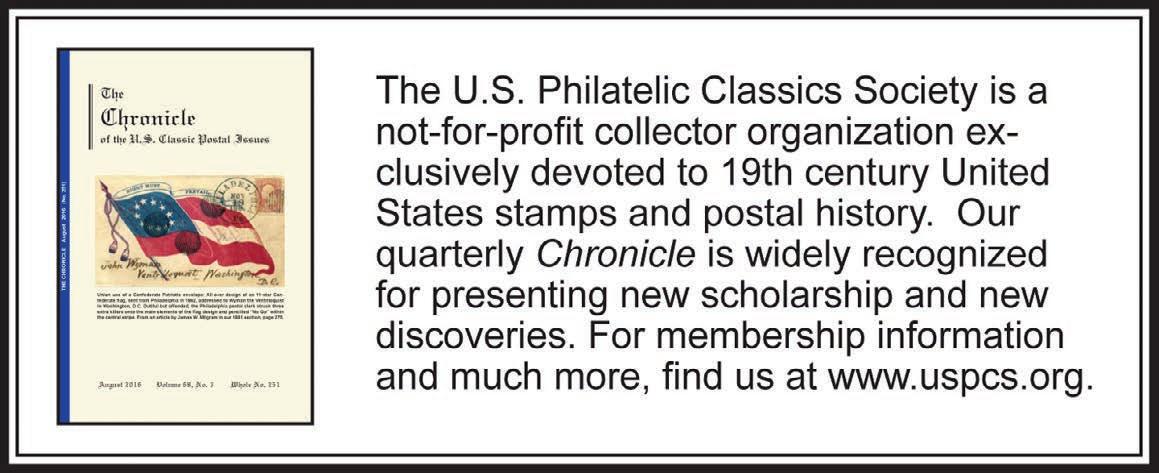
The U.S. Philatelic Classics Society is a not-for-profit collector organization exclusively devoted to 19th century United States stamps and postal history. Our quarterly Chronicle is widely recognized for presenting new scholarship and discoveries. For membership information and much more, find us at: www.uspcs.org.

WWI Suspension of Mail to Germany: An Update
by Jacob Alex Klerman USSS # 2213324 | m KlermanStamps@gmail.com
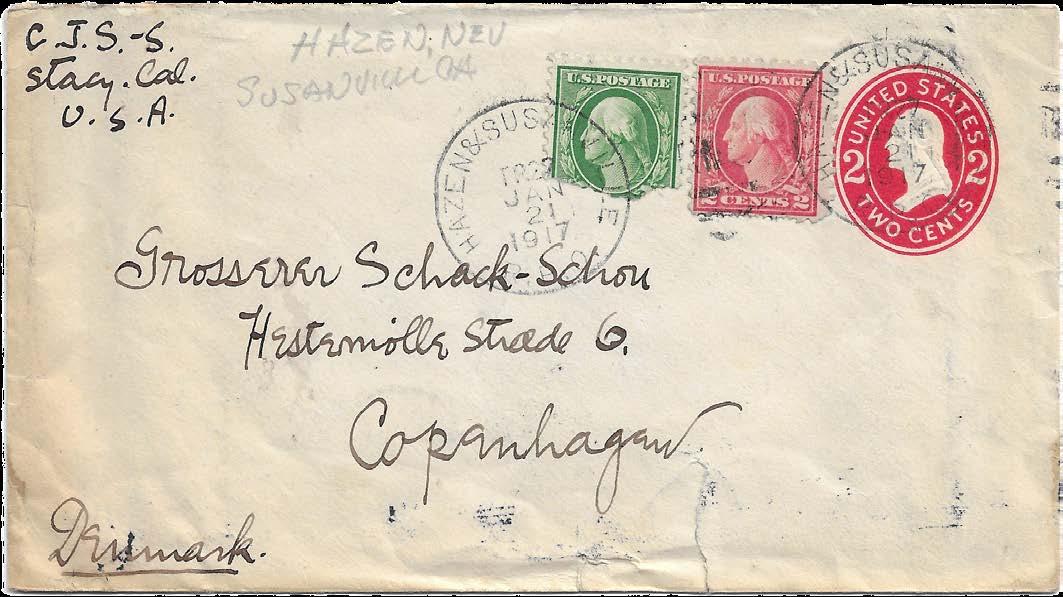
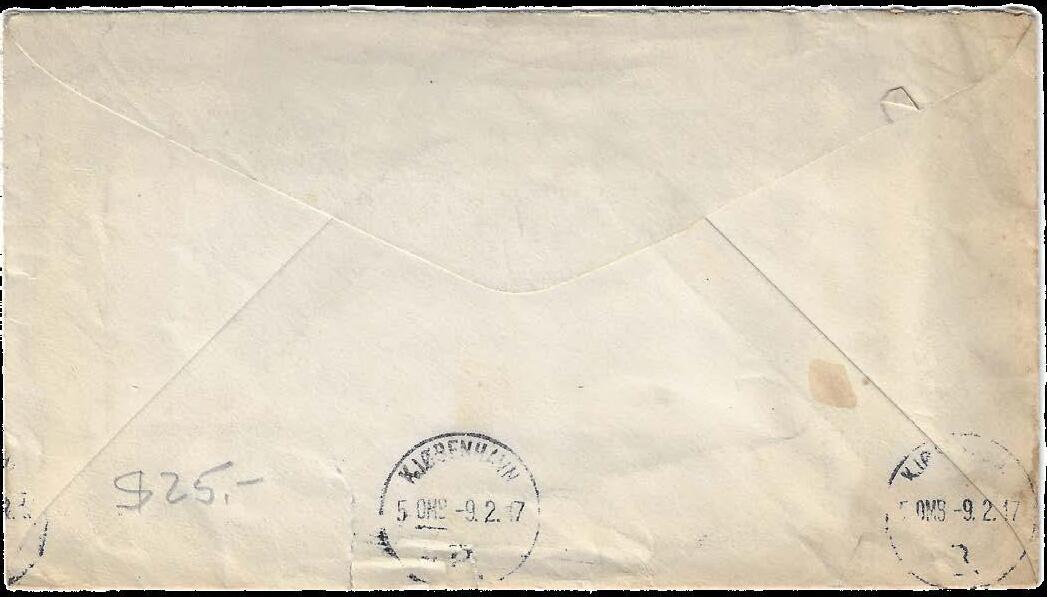
Figure 1: Letter to Copenhagen, Denmark, postmarked Hazen [Nevada] and Susanville [California] RPO, January 21, 1917; received Copenhagen, February 9, 1917.
This is an update to my February 2018 Specialist article about the US Post Office Department (USPOD) WWI “Mail service suspended” handstamp (Klerman, 2018). This update does four things.
First, based primarily on generous comments by readers, Table 1 updates the earlier census. The earlier census had 15 covers. This update adds 18, taking the new total to 33.
Second, the earlier article’s basic story was as follows. The last sailing with mail for Germany was the Norwegian America Line (NAL) steamer Bergensfjord, on January 27, 1917, but the United States did not declare war and suspended service until early April 7, 1917. Most mail receiving the USPOD “Mail service suspended” handstamp was mailed during this two-month period.
Nothing in the revised census is inconsistent with the earlier interpretation. Furthermore, new information strengthens that interpretation and provides more richness.
The previous sailing before the Bergensfjord was the NAL steamer Ranenfjord (the former American Hawaiian Steamship Company Isthmian) on January 20, 1917. Anything between January 20 and January 27 would have gone on the NAL Bergensfjord. Furthermore, letters (and perhaps postcards1) on that sailing should be identifiable. The Germans redeclared submarine warfare in the exclusion zone around the British Isles on February 1, 1917. On that date, the Bergensfjord was en route. To avoid the submarine threat, the New York Times (February 8, 1917) reports that the Bergensfjord “did not go to Kirkwall and passed north of the Faroe Islands which is outside the danger zone.” Given the extreme danger, the British did not force the steamer into Kirkwall for inspection.
Since the steamer did not stop at Kirkwall, mail was not taken off for censoring. Thus, such letters should have no censor labels. No letters to Germany are known from this sailing. However, Figure 1 presents a letter to Copenhagen Denmark, postmarked Hazen [Nevada] & Susanville [California] RPO, January 21, 1917, and received Copenhagen, Denmark, February 9, 1917—but with no censor label. Nearly all letters (but not postcards) to Northern European neutrals—Holland, Denmark, Norway, and Sweden— from mid-1916 through early 1919 are censored, so it seems likely that carriage on the Bergensfjord explains the otherwise anomalous lack of a censor label.
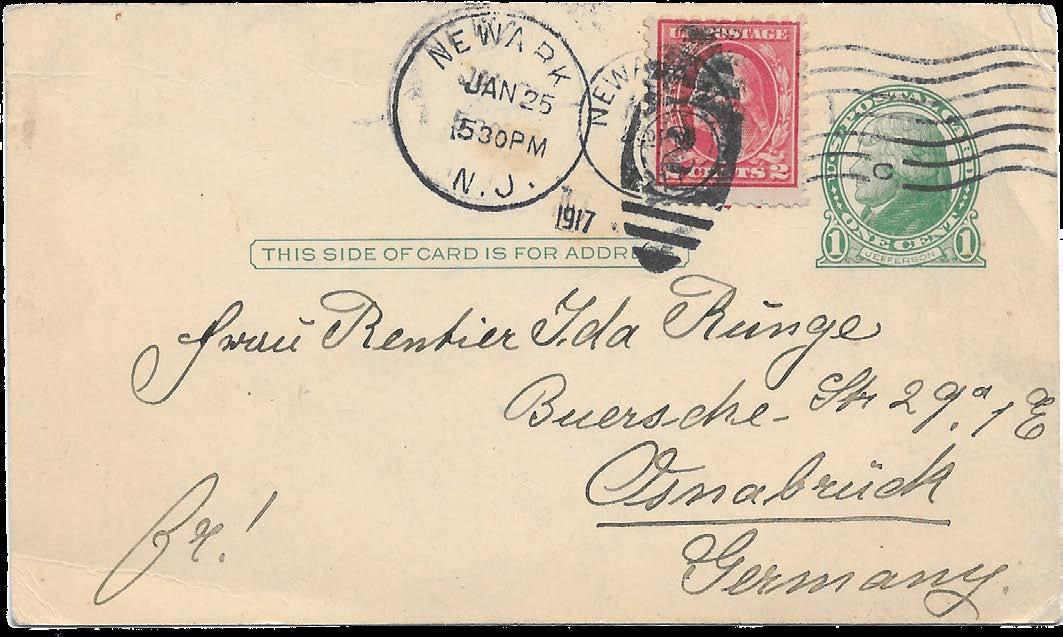
Figure 2: Uprated Jefferson postal card postmarked January 25, 1919 at 5:30 PM in Newark, New Jersey.
A newly discovered uprated Jefferson postal card addressed to Osnabrück, Germany, pushes the last mail not to receive the “Mail service suspended” handstamp quite close to the conjectured last mail sailing of January 27, 1917, by the Bergensfjord. The postal card is postmarked 5:30 pm, January 25, 1917, in Newark, New Jersey (Figure 2). The postal card is not censored, but often the British did not mark censored post cards in any way (the French did). The postal card did not receive the USPOD “Mail service suspended”
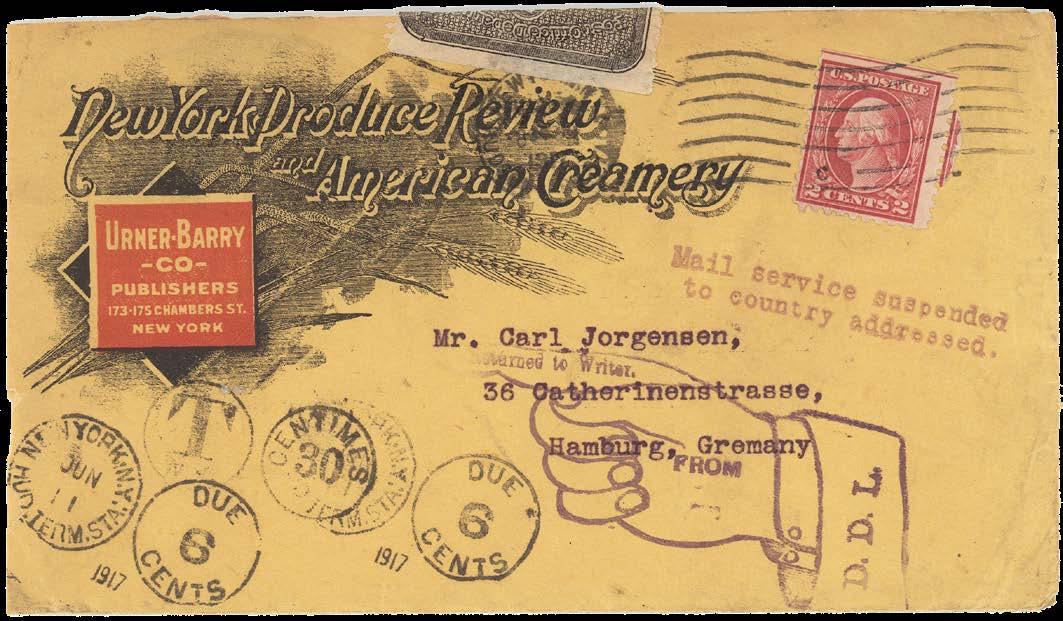
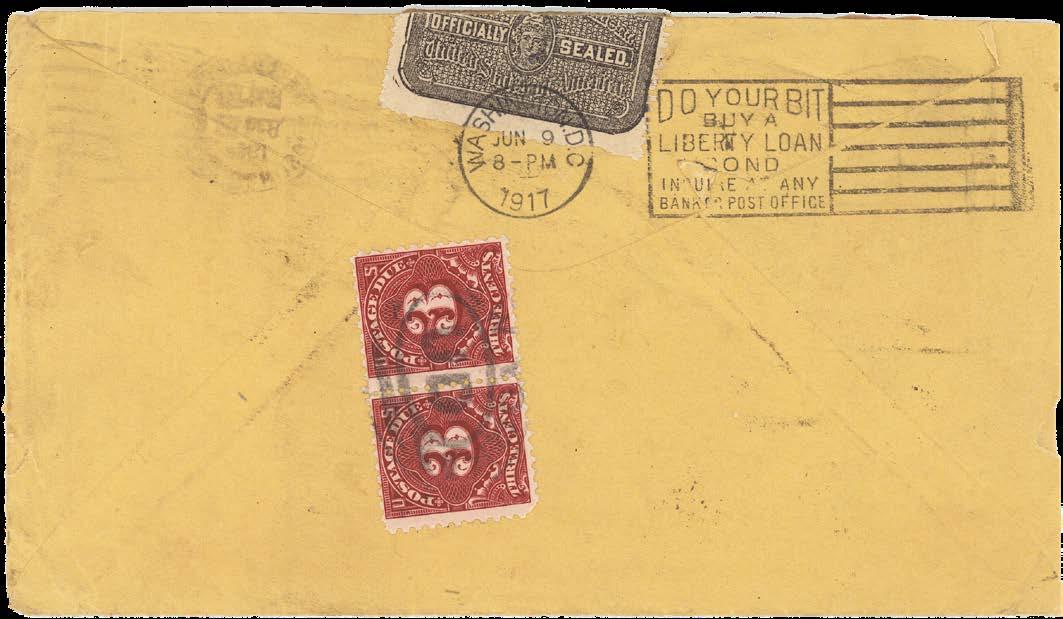
handstamp and appears to have gotten through to Germany. The “Outgoing Steamships” column in the January 26, 1917, New York Times shows that steamer as sailing at 2 PM the next day (January 27, 1917), with mails closing at 9:30 AM. The Transatlantic Mail column shows a supplementary mail closing time of 10:30 AM. A cover with a postmark up to 41 hours later than this postal card remains possible. Also consistent with the interpretation in the earlier article (but not cited there) is the statement in Mark (2000, p. 119, emphasis added), presumably based on official British sources:
Following the German declaration in February 1917, of unrestricted submarine warfare neutral shipping lines avoided British waters as far as possible. Approval was given so that ships, passengers, and cargoes, could be examined at specified ports overseas [for our purposes, Halifax; jak]. However, if they did not intend calling at a port in the British Isles, the neutral ships were not allowed to carry mail[.]
Figure 3: “Mail service suspended …” cover with D.D.L. pointing hand “Returned to writer FROM D.D.L.” (courtesy Andrew Kelley).
The New York Times reports that several steamers stopped in Halifax between late January and early April 1917. Most notable among the sailings stopping in Halifax was the Scandinavian America Line Frederik VIII, which sailed on February 14 with German Ambassador von Bernstorff. No steamers carrying mail are known to have stopped “at a port in the British Isles” during this period (certainly not the Frederik VIII). Furthermore, Mark (personal communication) reports he has not seen or recorded any transatlantic mail censored at Halifax, Nova Scotia. Thus, it seems unlikely that any ship carried US mail to Germany from late January 1917 to the American declaration of war and formal suspension of mail service in April 1917.
Third, the new covers suggest that there are at least three different handstamps.
The overwhelming majority of the covers include the “Mail service suspended to country addressed” handstamp illustrated in Figure 1 of the earlier article.
Figure 3 shows a cover with the “Mail service suspended …” handstamp, and also a “Returned to sender FROM D.D.L.” pointing hand. I cannot explain why this cover has this additional handstamp, but the other covers do not.
Figure 4 shows a “RETURN TO SENDER / N.Y.P.O. Foreign Division / MAIL Service Suspended” handstamp with “Route / Closed / Return to / Writer” in red manuscript. The cover is postmarked Shanghai Postal Agency in mid-August (perhaps August 17
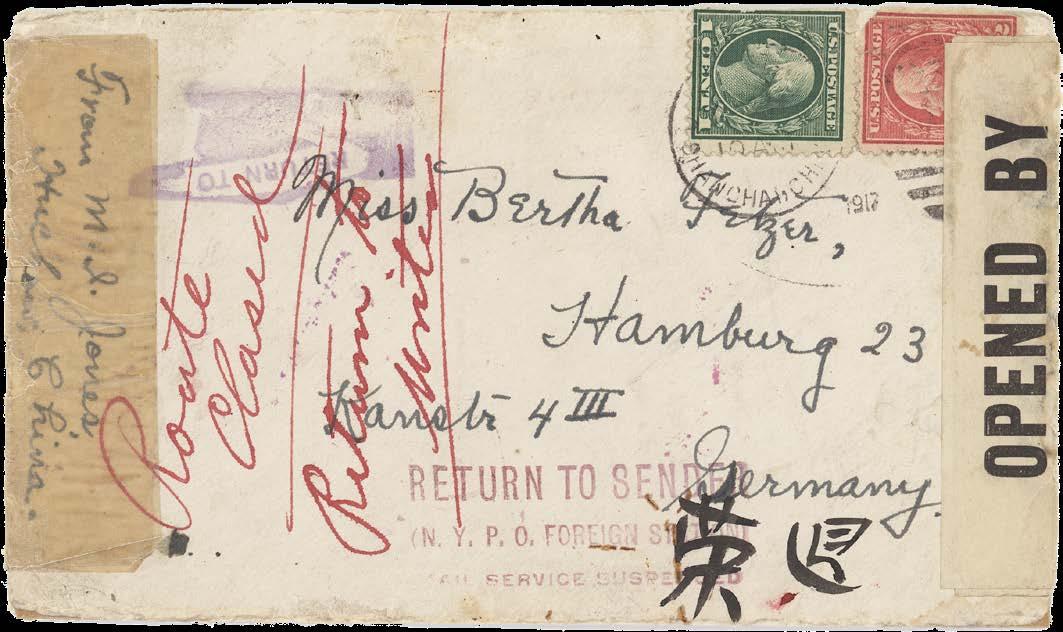
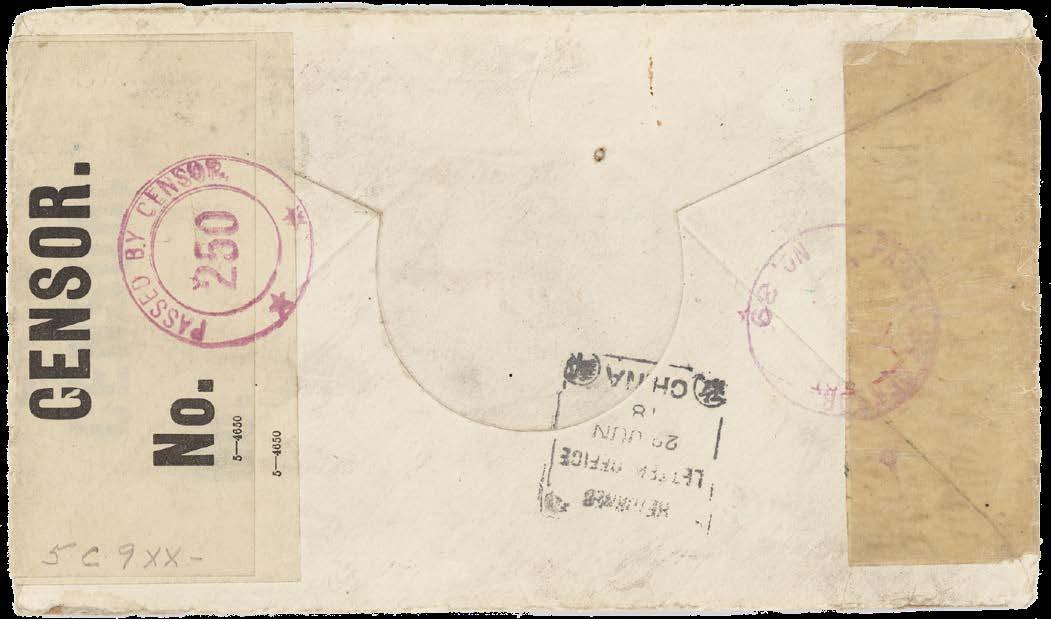
Figure 4: N.Y.P.O. Foreign Division handstamp (courtesy Andrew Kelley).
or 18). This is the latest cover in the current census and the only one that was censored. This appears to be an American censor label. It appears that at some point, the New York Foreign Mail Division started returning letters itself, at least the ones for which it could identify a return address. This change may be related to the establishment of regional branches of the Dead Letter Office in March 1917 (see Wawrukiewicz, 2017, p. 79).
Fourth, a revised reference list identifies several other relevant pieces of philatelic literature. Johnson (2009) and Lowther (2016) touch on the mail suspended marking. Wawrukiewicz (2016) considers the operation of the Dead Letter Office/Division of Dead Letters more broadly. Johnson (2014) displays examples of equivalent markings for European countries on the outbreak of WWI. Deery (2015) considers equivalent markings for WWII.
The author remains interested in seeing other uses of these handstamps and will update the census and discussion here based on additional material uncovered.
Table 1. Census of Mail Service Suspended Markings. Red text indicates update from prior census.
Date Origin Source
1/29/17 Washington DC Jim Forte
1/30/17 Spokane, WA, Station C. Author's collection
Notes
1/31/17 Pittsburgh, PA Andrew Kelley Blue handstamp
2/3/17
2/3/17
USPA Shanghai, China P Zavattoni exhibit
On German postal card with China overprint; held in US until end of war (returned 10/31/1919)
Pratt Sta, Brooklyn, NY Author's collection Double strike of handstamp
2/6/17 Rossville, MD
2/9/17
US Specialist, Washke, 2008
Hudson Terminal, NY, NY Kelleher Sale 4010
2/11/17 Ann Arbor, MI
2/15/17 Johnstown, NY
2/20/17
eBay 4/15/2018 192509844621 item number:202247563630
eBay 6/26/2024 176432726425, author's collection
Pointing hand, received June 12, 1917, official seal
Clear return address on back; same sender as 3/5 from Ann Arbor (different addressee)
Very light strike; DLO Pointing hand; backstamp Washington, DC, June 7, 1917
Highland Sta., Springfield, MA Jim Forte pointing hand
2/25/17 Fresno, CA Kevin Lowther
2/28/17 Kenard, NE
Author's collection
3/1/17 Indianapolis, IN Kevin Lowther
Two cent rate, t30
Date Origin
3/5/17 Ann Arbor, MI
3/5/17 Crawfordville, IN
3/9/17
Hudson Terminal, NY, NY
3/13/17 Stamford,CT
3/13/17 Newark, NJ
3/17/17
USPA Shanghai, China
Source
eBay 3/5/2018 item number:202247563630
Rocco Capori; ex Steve Suffet
Kelleher Sale 4010, 2/29/2012, lot 7409
P Zavattoni exhibit
eBay 10/27/2019 item number:163918920247
Rumsey sale 44, 4/285/1/2011, lot 1651
Notes
Clear return address on back
DLO Pointing hand; backstamp Washington DC August 31, 1917
Pointing hand, received June 12, 1917; backstamped Washington DC, June 11, 1917, official seal
Newark 250th anniversary seal on back
Official seal
3/17/17 (missing) Doug Weisz (no image)
3/19/17 Gordonville, MO
3/27/17 Sarasota, Florida
3/31/17 Philadelphia,PA
4/6/17 New York, NY
4/7/17 Springfield, OH
5/2/17 Toledo, OH
6/5/17 Milwaukee, WI
6/11/17
Hudson Terminal Station, NY, NY
6/20/17 West Philadelphia Sta., Philadelphia, PA
8/18?17
USPA Shanghai, China
Author's collection
Author's collection
Kellher Internet Sale 5016, 1/14/2018, Lot 5825
Johnson, CCC, 2009
John Hotchner
ebay 4/17/2020
124156362510; author's collection
Mark Burnett exhibit; USSS website
Andrew Kelley
Bourke W-F Part XVI, April 2004 US Specialist
Andrew Kelley; Kellher Internet Sale 5016, 1/14/2018, Lot 5221
No Date Sarasota FL ebay
No Date Terminal Station, Seattle, WA Jim Forte
D.D.L. pointing hand, official seal, Washington DC slogan cancel on reverse (June ??, 1917)
To Luxembourg, official seals, “rEtUrn tO SEnDEr” double strike
Registered (10¢ stamp missing), official seals, 2 x “rEtUrn tO WrItEr”, “SECOnD nOtICE”+D11
Also has “SErVICE SUSPEnDED tO GErMAnY” purple handstamp
Official seal, DDL hand, June 9 Washington, DC, handstamp; 2 cents paid;
Also has “UnMAILABLE” handstamp
nYFM handstamp, service suspended (3 cent rate?). “Route / Closed / Return to /Writer”, censored
Endnotes
1. Graham Mark (personal communication) claims that the British sometimes indicated censorship of postcards with an encircled P.C. handstamp. I have not seen that handstamp on postcards or postal cards from the US to Germany—even on sailings for which envelopes are censored.
References
1. Deery, Michael B. 2015. Return to Sender: Devices Used to Identify Service Suspended Mails during WW II, second edition, Wallaceburg, Ontario, Canada,
2. Grainger, J.D. ed., 2020. The Maritime Blockade of Germany in the Great War: The Northern Patrol, 1914–1918. Routledge.
3. Johnson, Robert. 2009. “Service Suspended: U.S. Postal Services in WWI and in Europe in Its Aftermath.” Collectors Club Philatelist. 88, No. 6 (November/December).
4. Johnson, Robert, 2012. “Robert Johnson’s Service Suspended 1914–1922.” http://www.c-c-s-g.org/forum/viewtopic.php?f=12&t=39
5. Klerman, Jacob Alex. 2018. “World War I Suspension of Mail to Germany.” United States Specialist, (February, 89:2, Whole Number 1056), pp. 69–74.
6. Lowther, Kevin. 2016. “War Conveniently Suspended Costly Treaty Rate With Germany.” American Stamp Dealer and Collector. March.
7. Mark, G., 2000. British censorship of civil mails during World War I, 1914–1919. Stuart Rossiter Trust Fund.
8. Wawrukiewicz, Anthony S. 2016. “The Dead Letter Office, 1859–2016,” pp. 59–94 in Insights into U.S. Postal History, 1885–2016. American Philatelic Society, Belfonte, Pennsylvania.
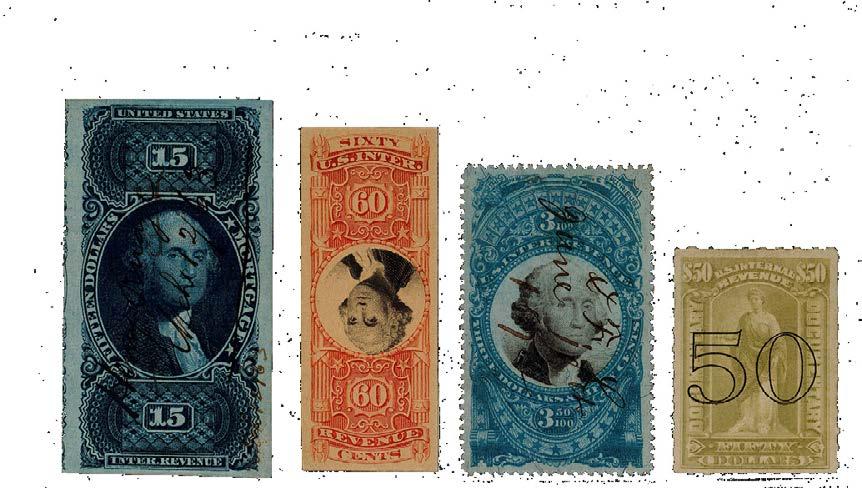
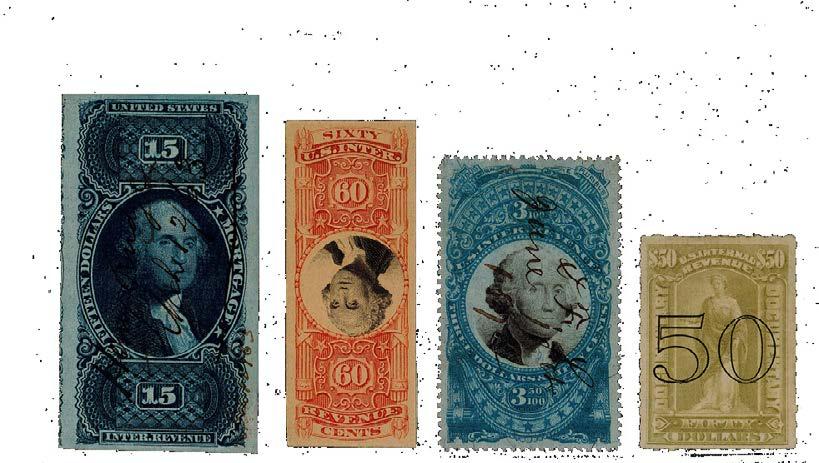




Girl Scount Commemorative
by Rodney A. Juell USSS #13852 | P.O. Box 3508, Joliet, IL 60434
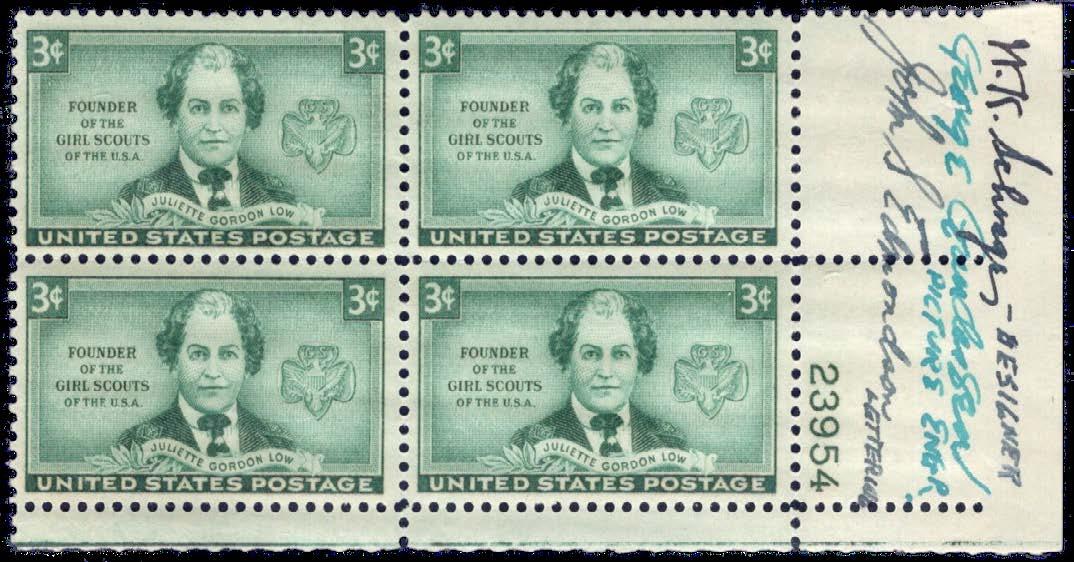
This month’s photo shows Postmaster General Jesse Donaldson and his grand-daughter, a 2nd Class Girl Scout, previewing the Juliette Low commemorative (Scott 974), which went on sale October 29, 1948. Looking on is Mrs. C. Vaughan Ferguson, president of the Girl Scouts of the United States. Shown nearby is a plate block of the Stickney rotary press-printed stamp, autographed by its designer, William K. Schrage and its engravers George Gundersen and John Edmondson.
Vintage Photo of the Month
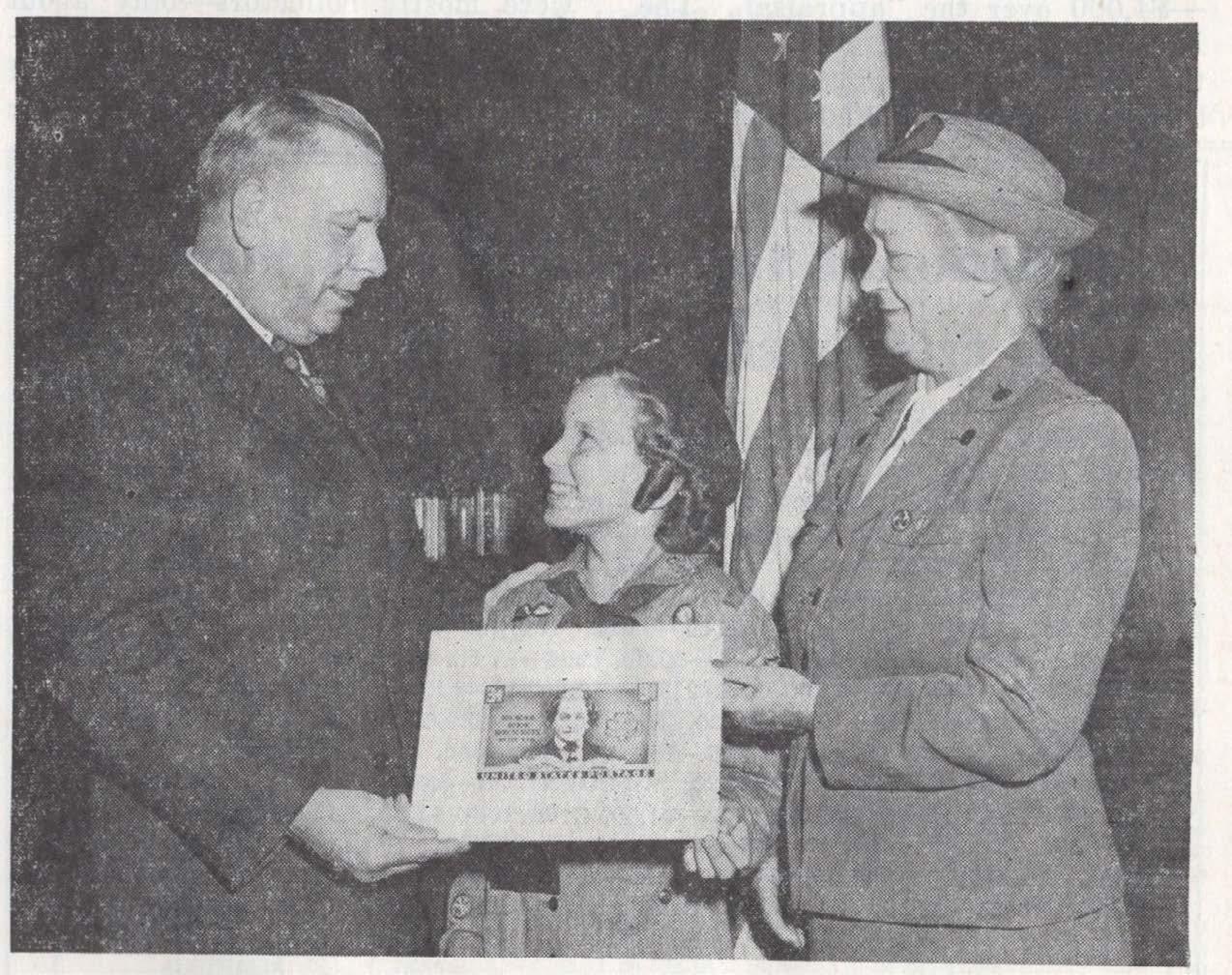

Great Americans Issue Part X—
The Cody Stamp and Changes at the BEP
by Jay Stotts USSS #10921 | m stottsjd@swbell.net
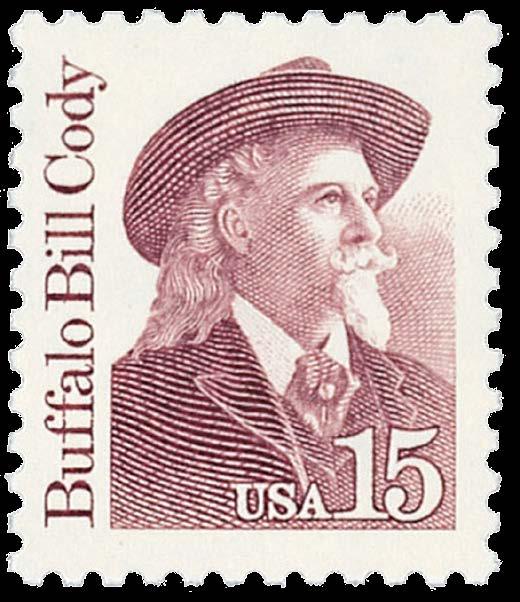
Previous chapters of this series have told the chronological story of the Great Americans Series. The GA was a definitive series with myriad values to pay various postal rates and provide low and high value stamps to complete frankings for all kinds of services. Since the various printing plates were seemingly always going to press, the Bureau’s workhorse presses, the Cottrell presses in the early 1980s, and the A Press in the late 1980s into 1990 were the norm.
B through F Presses
The Bureau did have other stamp printing presses however. We’ll offer some information to complete the record. The B Press was procured in 1973, the same year that the A Press was purchased. The B press was designated as press No. 701 and was a three-color Giori intaglio press. All three colors were printed from a single printing plate. The different colors of ink were separately deposited on the printing plate by inking-in rollers that placed each color in specific area(s) of the printing plate. Because it was a three-color intaglio press and Great American stamps were printed in a single color, this press was not used to print Great American stamps.
The Great Americans

The B Press was intended to print booklets and coil stamps. There were no finishing operations included on the press, although precanceling capability was being developed by 1985. The 20¢ Flag over Supreme Court coil (Scott 1895) is an example of a stamp printed on the B Press and is shown in Figure 1.
The C Press was the next generation of three-color intaglio press and was purchased in 1982. Goebel was the primary contractor. The C Press, designated press No. 901 by the Bureau, printed on a web of paper and had no finishing capability but could tag stamps. The press used a seamless printing sleeve.
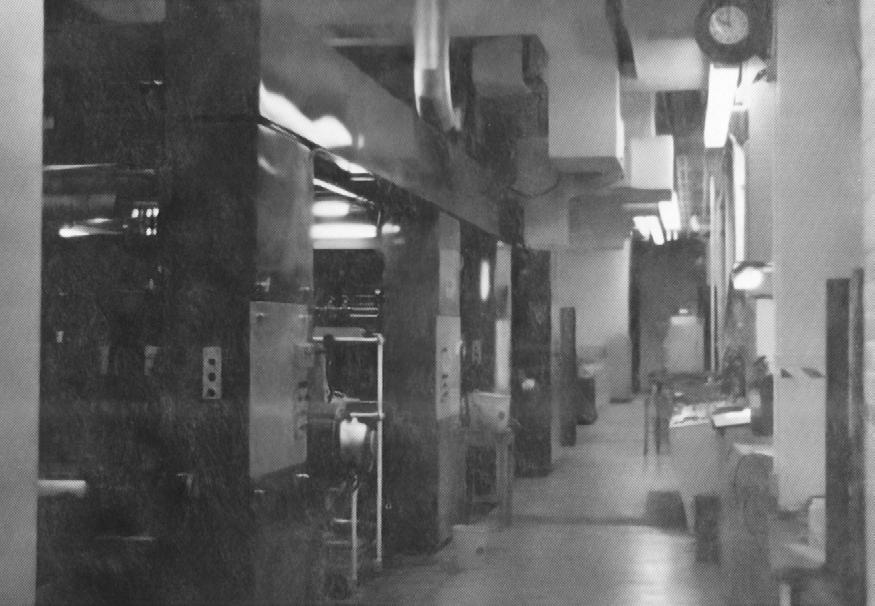
The first stamp printed on the C Press was the Flag over Supreme Court coil from sleeve 4, first used in the summer of 1982. Definitive-sized sheet stamps were printed from 800-subject sleeves. Figures 2 and 3 show the C Press and the inking-in rollers. These photos are from the article “Bureau Tests New “C” Press,” published on pages 469–471 of the October 1982 The United States Specialist.
The D Press was identical to the C Press, but with the addition of six offset printing stations. It was purchased in 1984. The key point was that the seamless intaglio printing sleeve could be interchanged between the two presses, allowing the Bureau to utilize one or the other depending on the press workloads. The D Press was designated as No. 902 by the Bureau and was intended primarily to print multi-colored commemorative stamps.
Figure 1. Flag over Supreme Court coils printed on the B Press.
Figure 2. Overall view of the C Press.
The Smokey Bear stamp (Scott 2096) shown in Figure 4 was the first stamp printed on the D Press.
Finally, the F Press could utilize the same intaglio printing sleeves as the C and D Presses. This press was made by Giori and was also a threecolor intaglio press. It had four-color offset printing capability. The press was purchased in the early 1990s. The first stamp printed on the F Press was the World Columbian Exposition stamp (Scott 2616), issued in January 1992, and shown in Figure 5.
With the purchase of the C, D and F Presses, the Bureau was moving toward flexibility. All three presses could utilize the same intaglio printing sleeves interchangeably. The days for the A Press as a workhorse press at the Bureau were numbered.
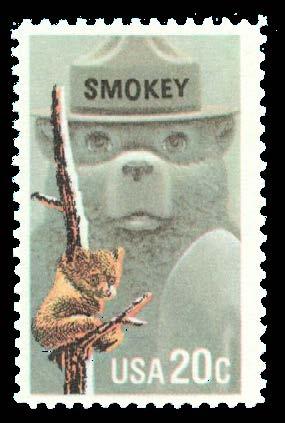
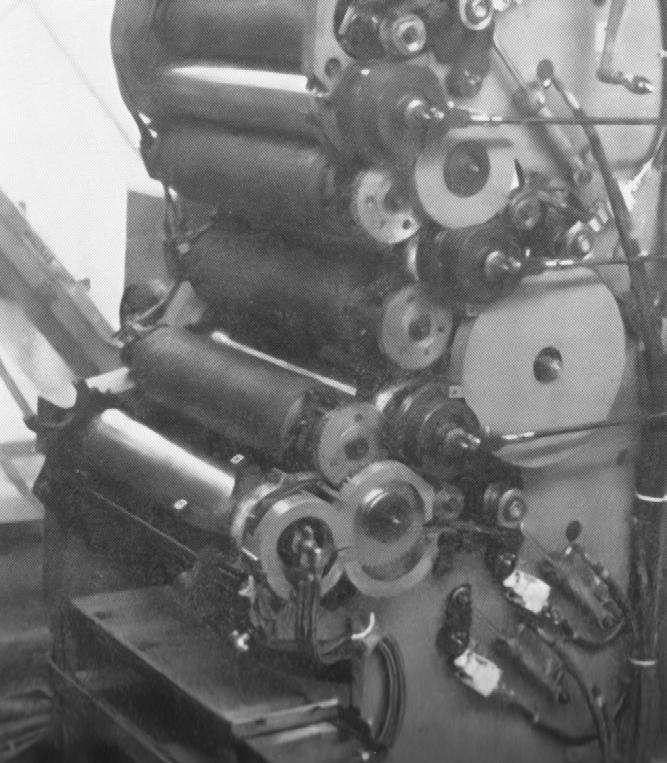
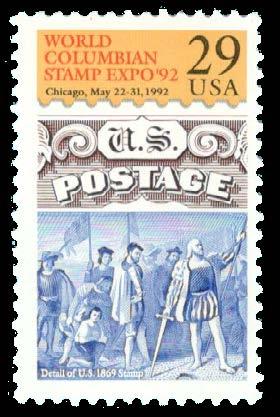
Prephosphored Paper
Another change the Bureau was investigating was prephosphored paper. If the paper included a suitable phosphor taggant, then the Bureau no longer needed to apply the taggant as a separate operation. The first prephosphored paper may have been a sample submitted to the Bureau by a paper manufacturer or, more likely, a paper broker who subcontracted paper, coating, and gumming operations.
The 15¢ Buffalo Bill Cody stamp, printed from sleeve 1, was the first (and only) Great American to be printed on the A Press using prephosphored paper. In this case, the taggant was mixed with the paper coating, and then the mixture was added to the paper,
Figure 3. View of the three inking-in rollers of the C Press.
Figure 4. Smokey Bear, first of the D Press stamps.
Figure 5. World Columbian Exposition stamp released in 1992.
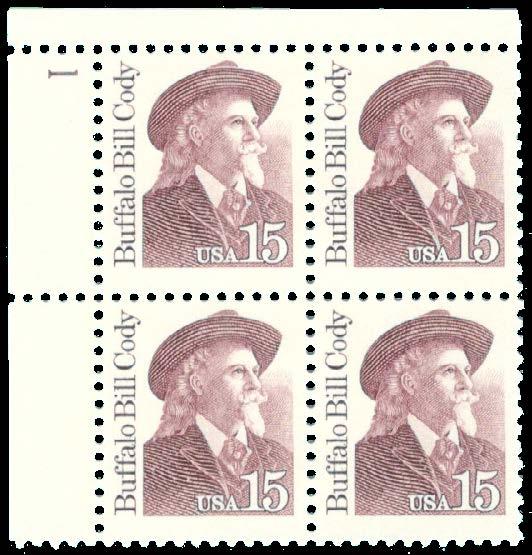
producing a smooth surface before the paper was shipped to the Bureau. When viewed under short-wave UV light, the taggant appears solid and uniform. Figure 6 shows the 15¢ Cody stamp printed from plate 1 on prephosphored paper. Thus, the Cody stamp saga had begun, with a stamp printed from the A Press on prephosphored paper when other contemporary GA stamps were also printed from the A Press, but were routinely printed with a large block tagging overprint. The sleeve went to press from May 4–10 and from May 19–20, 1988, printing on prephsphored paper. The Cody stamp has a first day of issue of June 6, 1988.
Later Cody Stamp Printings
Collectors discovered Cody stamps printed from sleeve 2 in the late summer of 1988. Records indicate that the sleeve number was assigned on May 31. This printing was run on the D Press, requiring a different style sleeve.
Dr. Michel Rybalka wrote in an article, “15¢ Buffalo Bill Cody Stamps Printed from Sleeve Two,” pages 243–246 of the May, 1989 The United States Specialist:
… without any advance announcement, production shifted from the A Press to the D Press. No official reason for change in presses was given, but unofficial Postal Service sources indicate that the BEP was, and still is, experiencing intaglio ink drying problems on both the A and B presses. New gas oven drying units are soon to be installed on these two presses. Meanwhile, some sheet stamp work has been shifted from the A to the D press …
So, now, we have another first for the Cody stamp among the GA stamps. The first to be printed on the D press from a sleeve that would be interchangeable between the C, D and F Presses. Figure 7 shows a sleeve 2 plate block. These stamps were overall tagged, but the vertical outside selvage margins are not tagged. The sleeve 2 marginal markings are different from the A Press markings. The most noticeable of the sleeve 2 marking differences are short, wide electric eye markings adjacent to every marginal stamp along the right vertical margin. The D Press printing was perforated on the off line Eureka perforator.
The next printing for the Cody stamps was July 18 to August 10, 1989, when sleeve 1 went
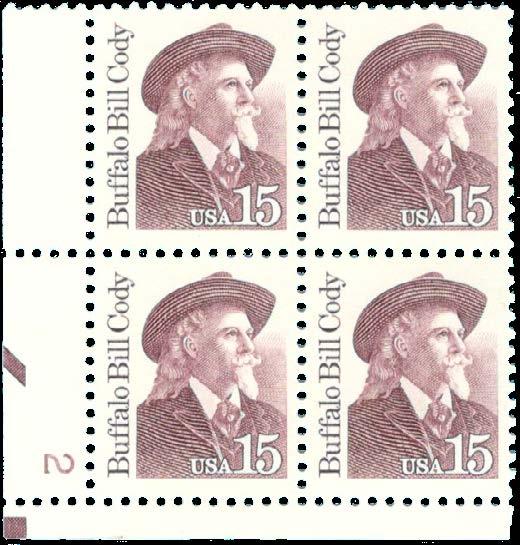
Figure 6. The first printing of the Cody stamp.
Figure 7. The D Press printing of the Cody stamp.
back to the presses. The A Press was back in service, so sleeve 1 was placed on the A Press. The printed stamps were tagged with the large block tag, so the Cody stamp was finally catching up with the production formats of its fellow Great American issues, as described in Part VI of this series of articles.
8. Strip of ten from the partially printed large block tag sheet with all color missing.
The Cody printing with the large block tag produced an interesting error, which is shown in Figure 8. The “stamps” without the Cody image are listed in the Scott Specialized Catalogue as number 2177d and are described as “all color missing” varieties. These varieties, as the illustration shows, came from partially printed panes of stamps. Clearly, Bureau inspection techniques should have caught these panes before they were distributed to a post office. And further, one can argue that a local postal clerk should have spotted the error as well. In the case of this pane, less than four Cody images were printed per row, so from this pane, 60 “all color missing” stamps were sold. It is interesting to note that although Cody images were missing, all the stamps have a large block tag on them. This happened with other values as well.
The Cody stamp paid the 15¢ domestic postcard rate, effective April 3, 1988, so this was an important, high production value. Printing records indicate that sleeve 1 made 1,879,219 impressions over its lifetime. Predictably, as might be expected with so many impressions, sleeve 1 became worn. The sleeve was made of a special hard copper material and was chrome coated. Figure 9. shows a block of four printed from the worn sleeve and may be compared in printing intensity to the block shown in Figure 6.
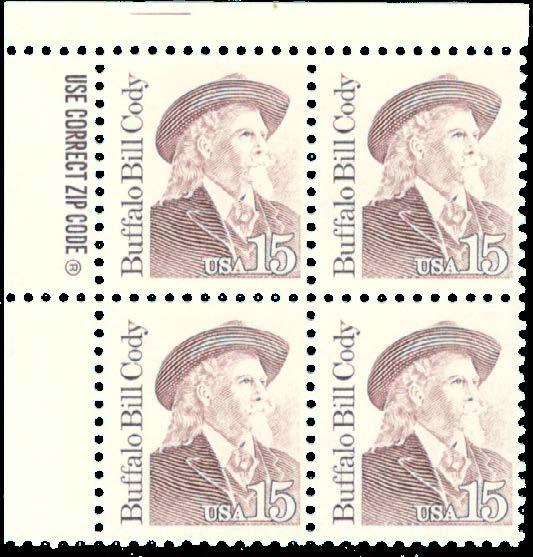
Figure 9. Block showing impressions from the worn state of sleeve 1.
Table 1 provides the history of sleeve 1. Note that during two periods, May 20–26, 1988, and October 18–20, 1989, records indicate that re-entries were made to sleeve 1. The Bureau de-chromed the copper sleeve and then made local re-entries using a Destouche transfer press, shown in Figure 10. The photo shows a sleeve on the transfer press as well as a transfer roll. The photo is from an article written by George Brett describing his first investigation of the 15¢ Cody re-entries. This article, “Re-Entry at the BEP, Specifically on the 15¢ Cody of 1988” and the follow-up article, “The 15-cent Cody Sleeve 1 (BEP 180,004) Re-entries, Continued,” were both printed in The United States Specialist. The first article appeared on pages 293–307 of the June 1992 volume and the follow-up appeared on pages 244–250 of the June 1994 volume.
Figure
Dates
April 12, 1988
April 25, 1988
Sleeve No. 180004 - 1 issued
Sleeve No. 180004 - 1 certified
May 4–10, 1988 At press 444,000
May 11–18, 1988
de-chromed, repaired, re-chromed
May 19–20, 1988 At press
May 20–26, 1988
De-chromed, re-entries, re-chromed
May 26, 1988 To vault
June 6, 1988
First Day of Issue of the Cody stamp
July 18–Aug. 10, 1989 At press 355,719
Aug. 11–29, 1989
De-chromed, repaired, re-chromed
Sep. 5–6, 1989 At press 130,000
Oct. 10–18, 1989 At press 156,000
Oct. 18–20, 1989
De-chromed, re-entries, re-chromed
Oct. 30–Nov. 7, 1989 At press 716,500
Nov. 8, 1989 To vault
Dec. 12, 1989
Sleeve No. 180004 - 1 canceled
Total Impressions 1,879,219
So, why did the Cody re-entries merit two articles by George Brett? To sum it up in a single word, the re-entries are spectacular. Not all positions were re-entered, only selected ones. When one views a pane of 100 subjects of the Cody stamps printed from sleeve 1 after re-entries were made, the re-entry positions—strong impressions mixed into a field of worn impressions—almost jump off the pane. Specialists in modern issues in 1988 and 1989 noticed the strong impressions and began accumulating as many positional panes as possible to document the re-entry positions. Keep in mind that the sleeve printed 800 subjects (eight post office panes of
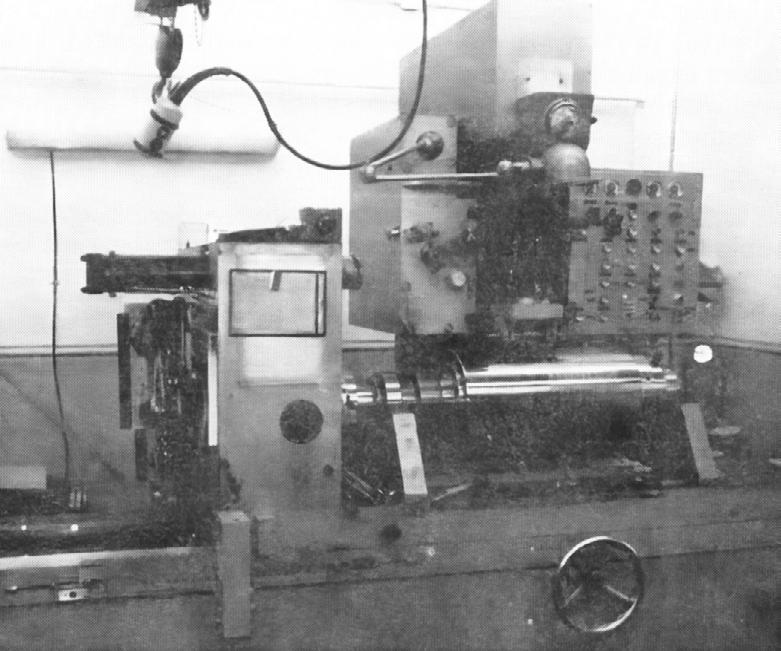
Table 1. Printing History of Sleeve 1 of the 15¢ Cody Stamp
Figure 10. The Bureau's Destouche transfer press.
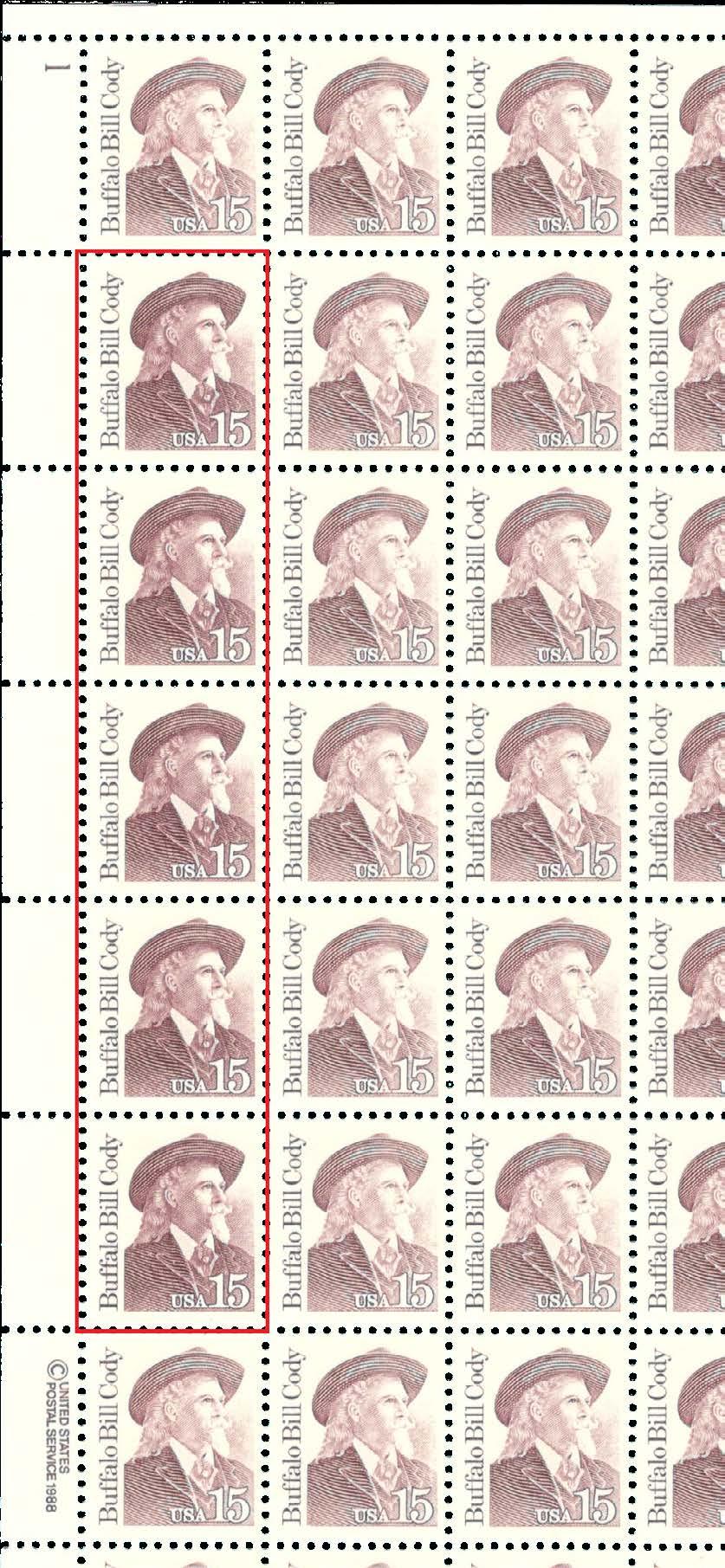
Figure 11. Re-entries mixed among worn impressions.
100), so there were two each of upper left (UL), lower left (LL), upper right (UR) and lower right (LR) post office panes of 100 subjects. And there were two occasions where re-entries were made, so the maze of combinations is staggering. Figure 11. shows an upper left portion of a sleeve 1 UL pane. In this photo, positions 11, 21, 31, 41, and 51 are re-entries, showing up much stronger than surrounding original and worn impressions. These five re-entries are outlined in red in the figure.
Brett’s two articles are well worth reading. He concluded that there were three levels of re-entries (weak, medium, and strong), and as you survey a re-entered pane of Cody stamps, you can see various degrees of intensity across the 100 subjects. Sleeve 1 was canceled in December 1989.
A new sleeve, sleeve 3, was assigned in November 1989, for the A Press and was certified on January 4, 1990. Stamps printed from this sleeve were overall tagged as were its contemporary GA stamps as described in Part IX of this series. Figure 12. shows a plate block printed from sleeve 3.
After the demise of the A Press, Cody stamps were again printed from sleeve 2. Since this sleeve was interchangeable between the C, D and F Presses, it is unclear which of these presses may have printed the later sleeve 2 production.
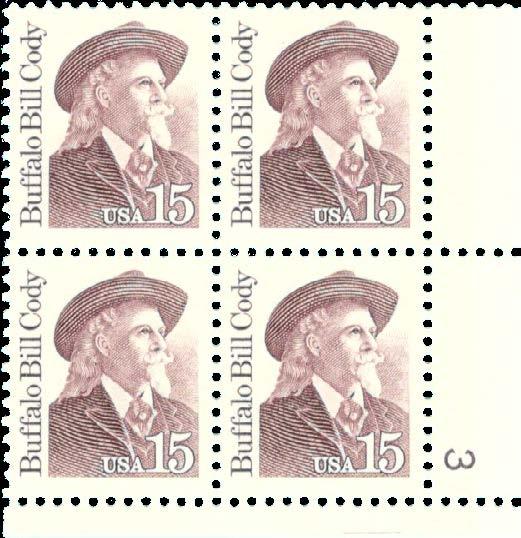
Changes of Presses and Tagging
The future of Great Americans Series production at the Bureau became clear as the 15¢ Cody stamp evolved. Production would move from the A Press to the interchangeable C, D and F Presses. The days of printing phosphorous tagging on the face of sheets of stamps were also numbered. Prephoshored paper was on the horizon.
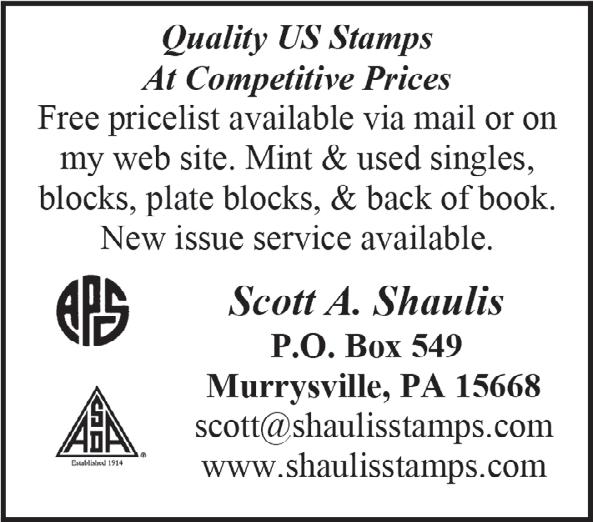
If you collect Plate Blocks, Booklets, Coils, or Sheets, the above website, with hundreds of sets at Face Value, will be a great savings to you. Enjoy the hobby.

Armen Hovsepian (APS 150170) P. O. Box 24222 Overland Park, KS 66283 info@USatFACE.com

Figure 12. Plate block printed from sleeve 3, A Press.
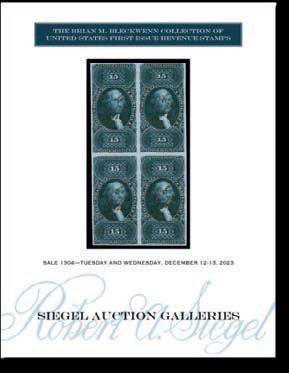
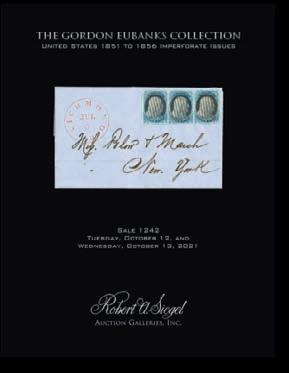
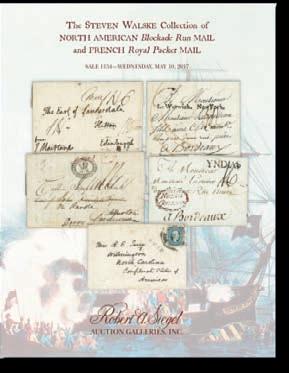
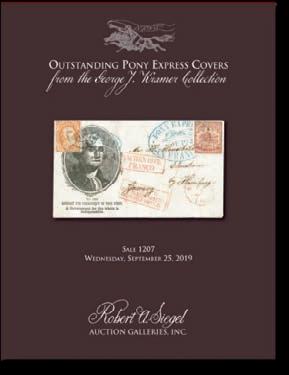
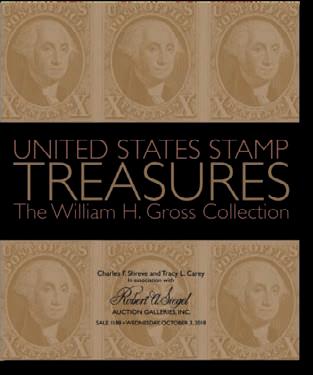
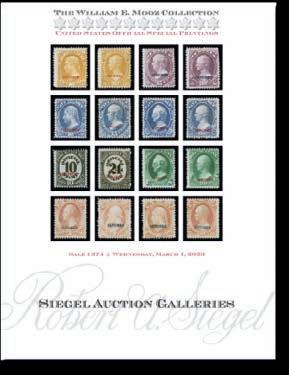
KramerGrossMooz
Siegel offers unparalleled expertise, a worldwide client base, financial reliability, intelligent marketing, and the best internet resources of any philatelic auction house. Contact us today to learn more about consigning with Siegel and ensuring your legacy.

Phone (212) 753-6421
Email: stamps@siegelauctions.com

FDR and the 1944 Steamship Savannah Commemorative
by Paul M. Holland USSS #16849 | m pholland.thorleaf@gmail.com
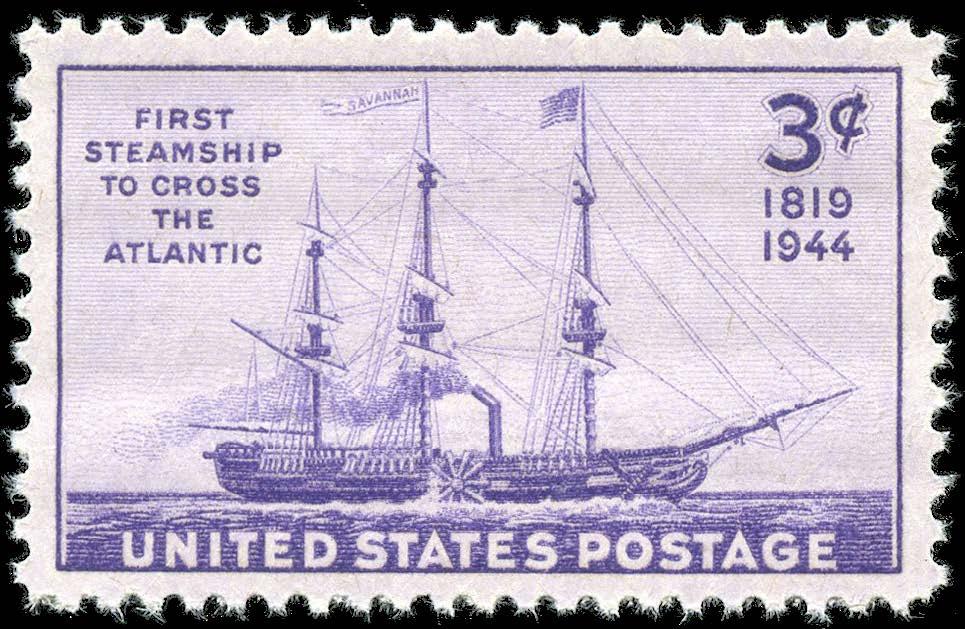
In view of the importance of transoceanic shipping to our war effort, it seems especially appropriate that the anniversary of the original crossing of the Atlantic under steam power should occur at this time.
Exactly 125 years ago today, the S. S. SAVANNAH, the first vessel propelled by steam to complete the voyage, sailed from Savannah, Georgia, and arrived at Liverpool, England, 27 days later.
As a philatelic souvenir of this occasion, I am sending you this first-day cover bearing a copy of the Steamship commemorative stamp, canceled at Savannah, Georgia, on the date of issue.
—From a signed May 22, 1944, letter sent with a Favor First Day Cover for the Savannah stamp to Sol Glass by Postmaster General Frank C. Walker.
Steeamship Savannah Commemorative
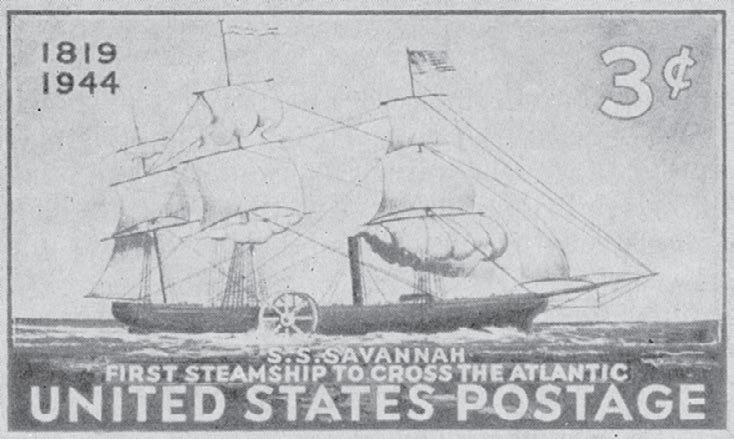
Trans-oceanic shipping was of parmount importance during the Second World War. Without it, Great Britain would have been unable to resist the German onslaught during 1940 and the vast industrial resources and production capabilities of the United States would have ultimately counted for nothing. With this in mind, President Franklin D. Roosevelt (FDR) decided that a commemorative stamp celebrating the first steamship to cross the Atlantic Ocean should be issued. This was the SS Savannah, an innovative hybrid sailing ship/sidewheel steamer built in 1818 at a New York shipyard. Although originally laid down as a sailing packet, an auxiliary steam engine with large 16-foot paddlewheels was added to provide propulsion in calm weather. Curiously, these could be retracted and stored on deck when not in use. Captain Moses Rogers was the driving force behind the idea for such an ocean-going hybrid vessel and was supported financially by the Savannah Steamship Company, founded by merchants who were familiar with the use of steam-powered boats for commerce on the river between Savannah and Augusta, Georgia. Since only a limited amount of coal to power the Savannah’s boiler could be carried aboard, much of the proposed transatlantic crossing would have to made under sail.
Rogers himself was an experienced sea captain and would command the voyage. After testing the steam propulsion system in New York Harbor, Savannah sailed to Savannah, Georgia, gaining much publicity on the way. US President James Monroe even went aboard the Savannah for an excursion shortly before her historic voyage, dining on board under steam power on May 11, 1819. He was favorably impressed.
The Atlantic crossing to Liverpool, England, began on May 22, 1819. Although the majority of the voyage was carried out under sail, when traveling by steam power, black smoke billowed. Several times during the voyage, other vessels assumed that the ship was on fire and tried to follow it to offer assistance, most dramatically when a fast revenue cutter off the coast of Ireland had trouble catching up to the “burning ship” even though its sails were furled. Finally, the Savannah arrived to a rousing welcome in Liverpool, England, after a 27-day crossing, thereby becoming the first steamship to cross the Atlantic Ocean.
Nearly 125 years later, President Franklin D. Roosevelt recognized the importance of trans-oceanic shipping in his April 7, 1944 memo to Postmaster General (PMG) Frank C. Walker, which included a commemorative celebrating the steamship Savannah among new stamps related to the war effort.2 The stamp was officially announced by PMG Walker on April 13, with the first day of issue to be in Savannah, Georgia, on May 22, 1944.
With little time available for designing, engraving, and printing the stamps, the Bureau of Engraving and Printing (BEP) rushed into action. For this, the Post Office Department provided a photograph of the detailed ship’s model of the SS Savannah in the
Figure 1. Rejected design for the 1944 Savannah stamp.1
Marine Museum in Newport News, Virginia.1 In the meantime, FDR sent an April 26 memo to Walker to ensure the unusual break in the smokestack on the Savannah was depicted correctly.2 However, two designs by Victor S. McCloskey, Jr. continued apace and were submitted on May 1, 1944.1 The first (and later rejected) design in Figure 1 shows the Savannah under sail with the flag, banner, and smoke all going forward. Note especially the vertical smokestack.
A belated May 4 memo to FDR from Walker confirmed that the US Navy agreed with the break in the smokestack.2 This is now correctly shown in Figure 2 using a closeup from the approved large die proof of the stamp (Figure 3) along with a detailed view of the ship’s model. In this design, the sails are furled, with the flag, banner, and smoke all streaming aft. The break in the
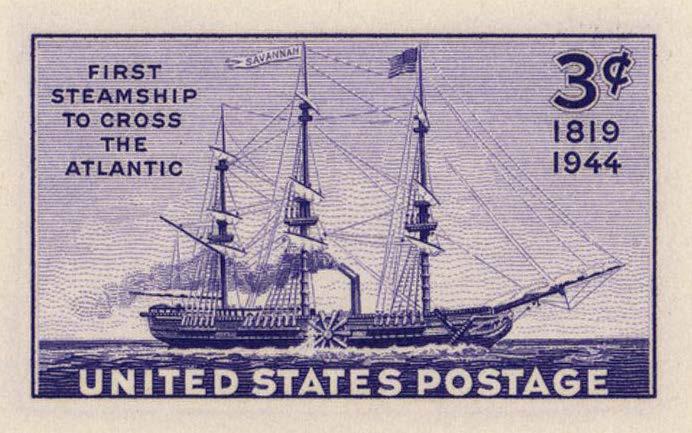
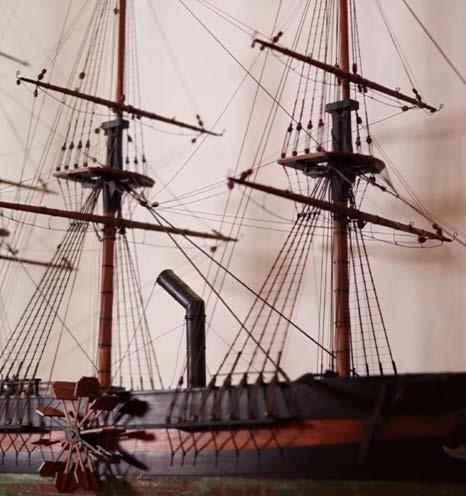
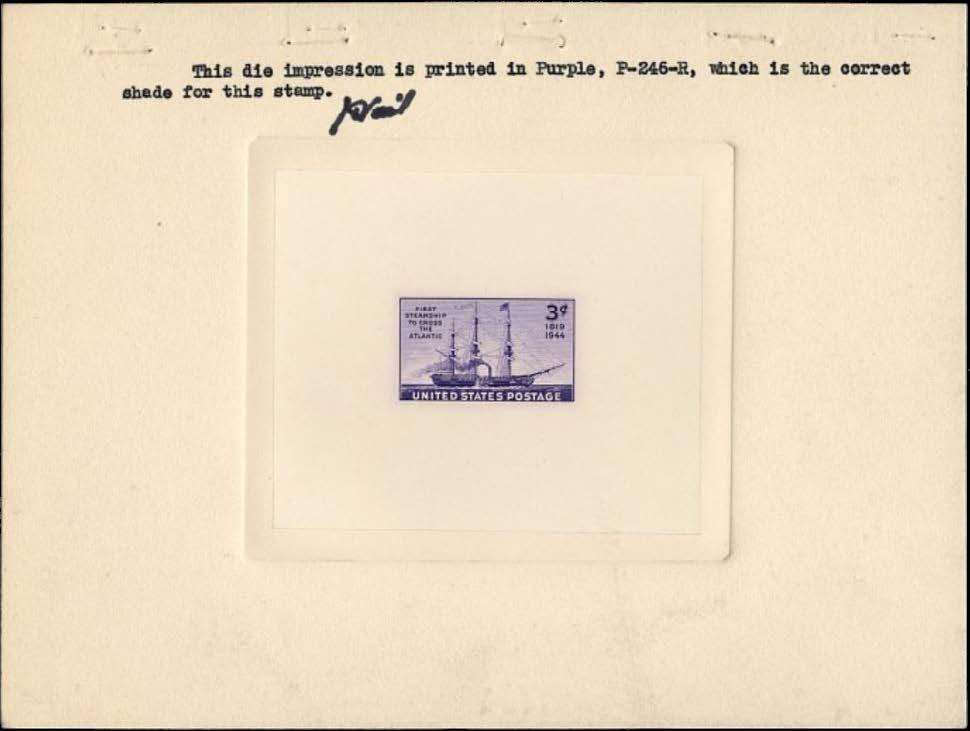
Figure 2. Closeup from approved large die proof with detail from ship’s model (courtesy National Postal Museum and the Marine Museum, Newport News, Virgina).
Figure 3. Approved large die proof showing correct color (courtesy National Postal Museum).
smokestack is clearly shown, reflecting FDR’s concern, and there is greater detailing of the vessel and a rearrangement of the legends. Interestingly, PMG Walker approved this corrected design on May 3. The design is attributed to Victor S McCloskey, and the engraving to Charles A. Brooks and James T. Vail.1
Little time was wasted in getting the stamp into production. In fact, printing began on May 10 and the first deliveries to Savannah, Georgia, were made on May 15, even though PMG Walker did not formally approve the die proof itself until May 12, 1944.1
It was also on May 3 that Walker announced the selection of Kings Point, New York, as an additional “first day” city. This may seem puzzling at first, as there is no obvious connection between this and the original Atlantic crossing. However, Kings Point was the site of the recently opened United States Merchant Marine Academy, dedicated on September 30, 1943, by President Franklin D. Roosevelt. The heroism of merchant marine sailors in the face of the U-boat menace was, of course, crucial both in supplying Britain and in supporting the Allied war effort. Losses among merchant marine sailors were heavy, with death rates exceeding those of the other American military services during World War II.
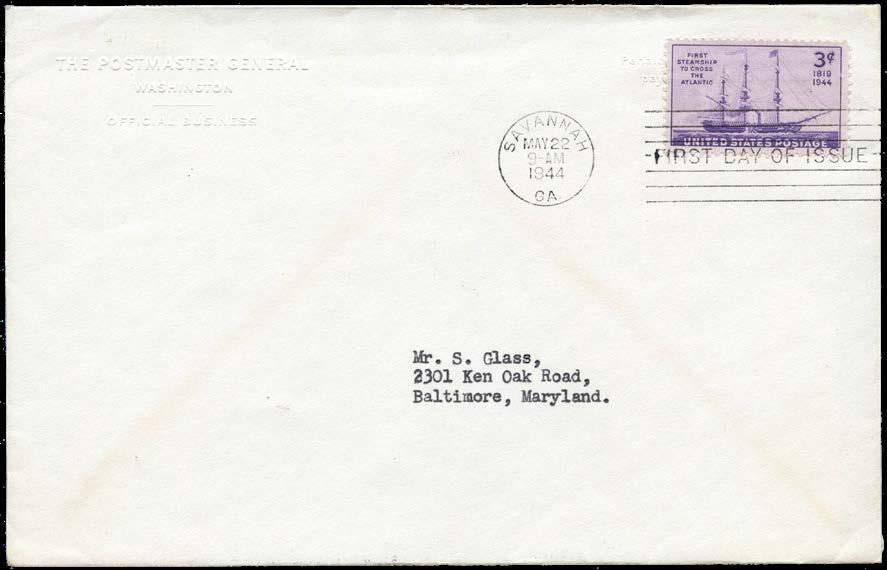
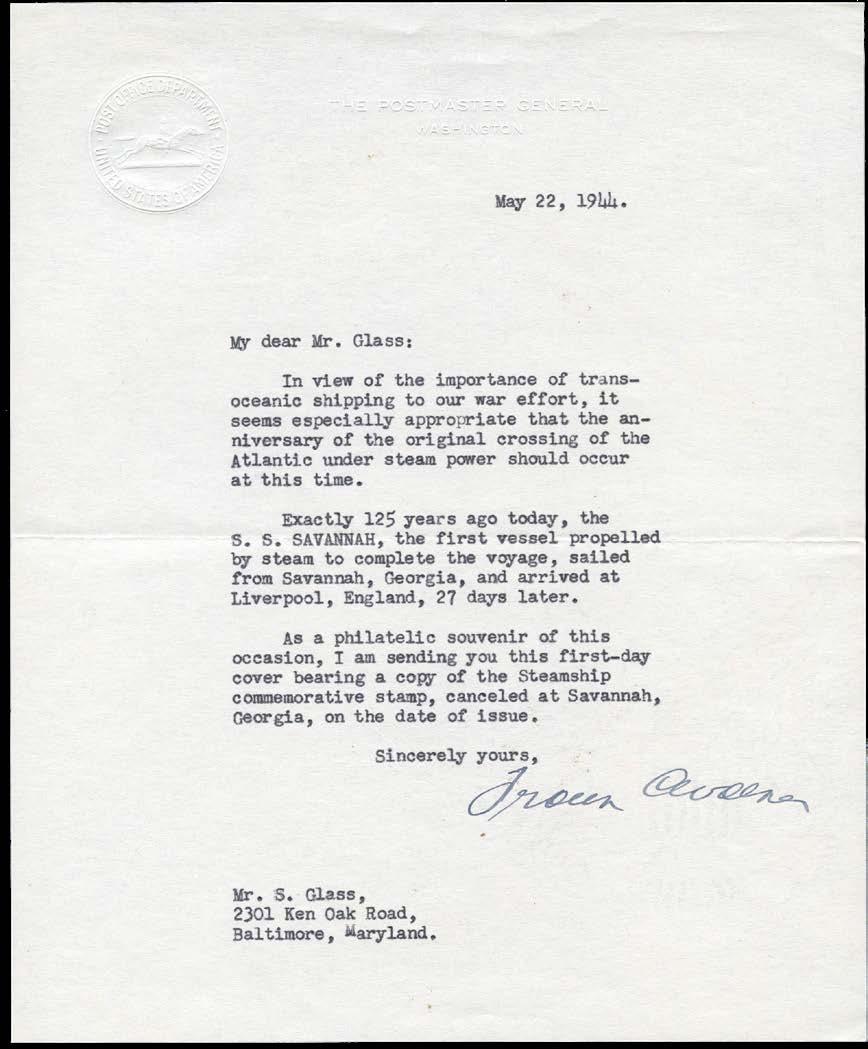
Figure 4. Favor FDC with signed letter to Sol Glass from PMG Walker.
In my collecting, I’ve found that Walker, who served as PMG under FDR from 1940–1945, seemed less interested in signing favor FDC letters than his predecessor Jim Farley, and consequently, most of the favor FDCs from him that I’ve seen contain printed new issue notices from the Post Office Department instead. However, I do have a few examples, such as the favor FDC for the Steamship Savannah with signed letter sent to Sol Glass shown in Figure 4.
Sol Glass (1893–1973) was one of most important figures in 20th century US stamps. He was a prolific contributor to The Bureau Specialist (precursor to The United States Specialist) and an inaugural member of the Citizen’s Stamp Advisory Committee, and is enshrined in the American Philatelic Society’s Hall of Fame. I should point out that among the many benefits of membership in the United States Stamp Society is online access to Sol Glass’s book United States Postage Stamps 1945–1952, as well as his numerous articles.
Of course, the “holy grail” of favor FDC collecting are covers with signed letters sent to President Franklin D. Roosevelt, himself. I’m fortunate in having two such letters sent to FDR from Deputy Third Assistant PMG Roy North for the Steamship Savannah Commemorative, but alas, both without covers. The first of these, with its White House receiving stamp sent to FDR from Savannah, Georgia, is shown in Figure 5.
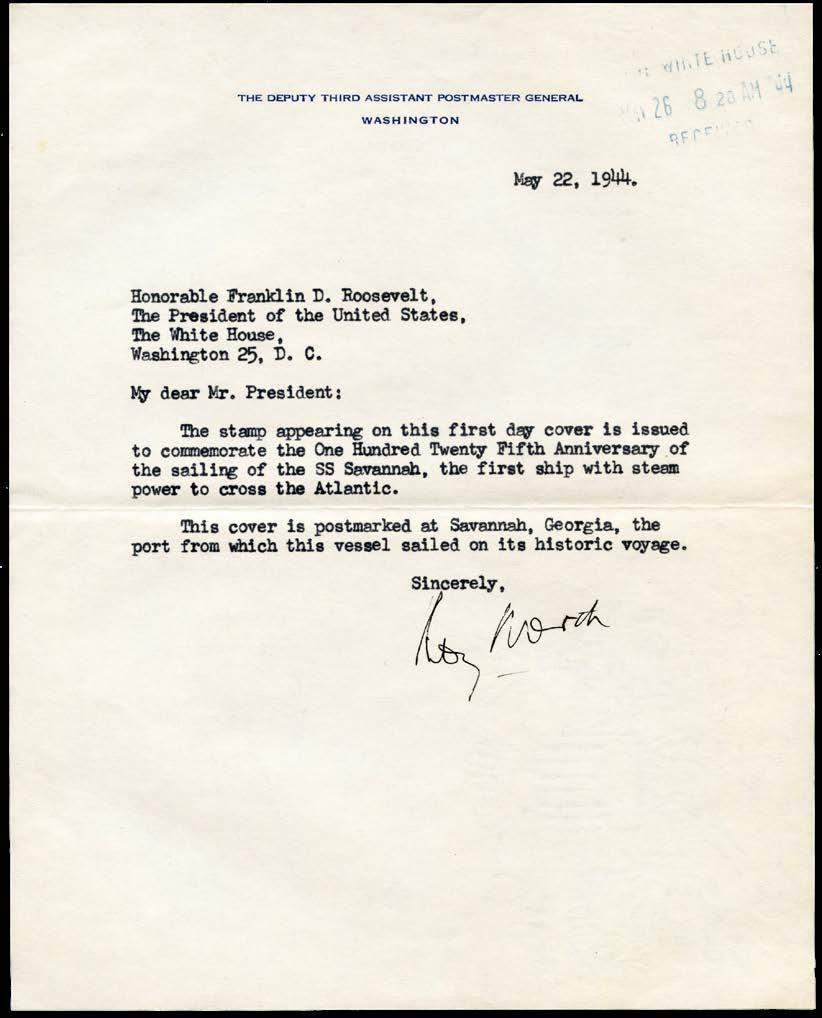
Figure 5. FDR’s signed letter for favor FDC from Deputy Third Assistant PMG Roy North.
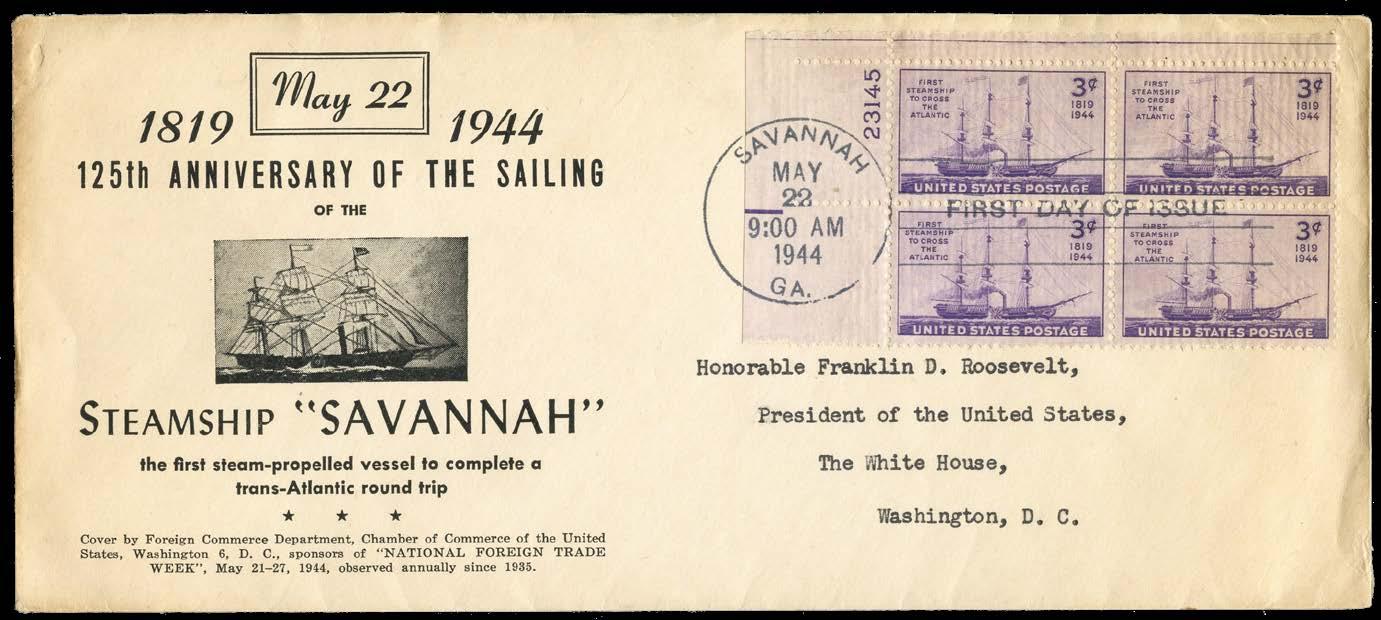
Figure 6. FDR’s FDC for the Savannah stamp from the United States Chamber of Commerce.
FDR also received FDCs sent by various professional organizations, such as my nicely cacheted cover franked with a plate number block of the Savannah stamp shown in Figure 6. This large cachet was created by the Foreign Commerce Department of the Chamber of Commerce of the United States, Washington, DC, and was produced as a tribute to “National Foreign Trade Week,” May 21–27, 1944.
It was President Franklin D. Roosevelt who dedicated the United States Merchant Marine Academy in Kings Point, New York, on September 30, 1943, and my other signed favor FDC letter to FDR for the Savannah stamp is one sent to FDR from Kings Point, New York. Signed by Deputy Third Assistant PMG Roy North, this is shown in Figure 7. Again, the letter has a White House receiving stamp, and in this particular case, I’m able to show it with an auction image of the “missing” favor FDC cover addressed to FDR . Note that there are signs of water damage to the edges of both the letter and on the cover in the area of the postage stamp, suggesting why these two items may have later become separated.
I have another official favor FDC for the Steamship Savannah Commemorative in my collection, as shown in Figure 8. This was sent from Kings Point and is signed by Rear Admiral Giles C. Stedman, the Superintendent of the Merchant Marine Academy. The cover is on older style official Postmaster General stationery. It is franked with a plate number single and is addressed in pencil to someone at the Post Office Department in Washington, DC. Previously, Stedman was awarded the Navy Cross for his daring rescue of the entire crew of a British freighter in the middle of the Atlantic in rough seas.
My FDC from Kings Point sent to FDR in Figure 9, is from the Training Organization and War Shipping Administration of the United States Merchant Marine Academy. The large and detailed cachet shows an aerial view of the Academy’s facilities at Kings Point, New York.
Following the SS Savannah’s first crossing of the Atlantic in 1819, other trans-oceanic steamships based on paddle wheel propulsion were developed. The most notable of these was the massive British side-mounted paddle wheel steamer SS Great Western, built by the famed British engineer Isambard Kingdom Brunel in 1838. This was the first
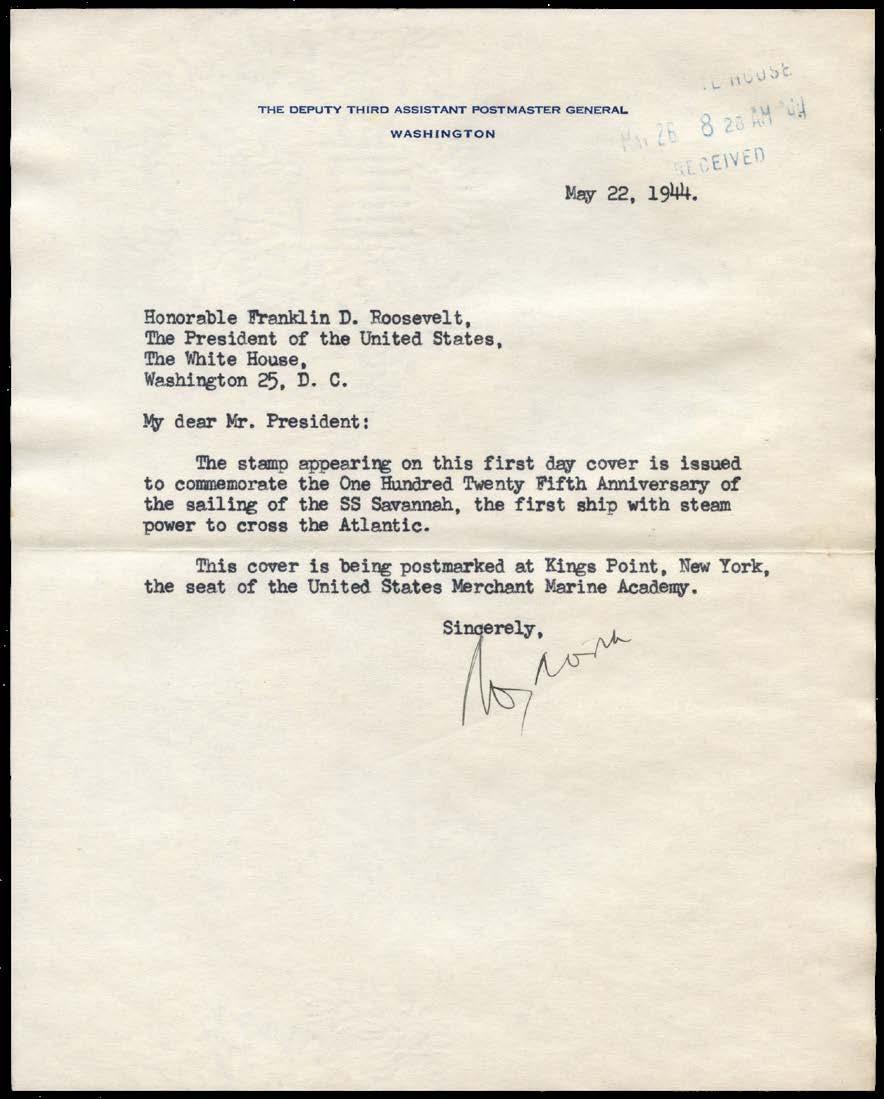
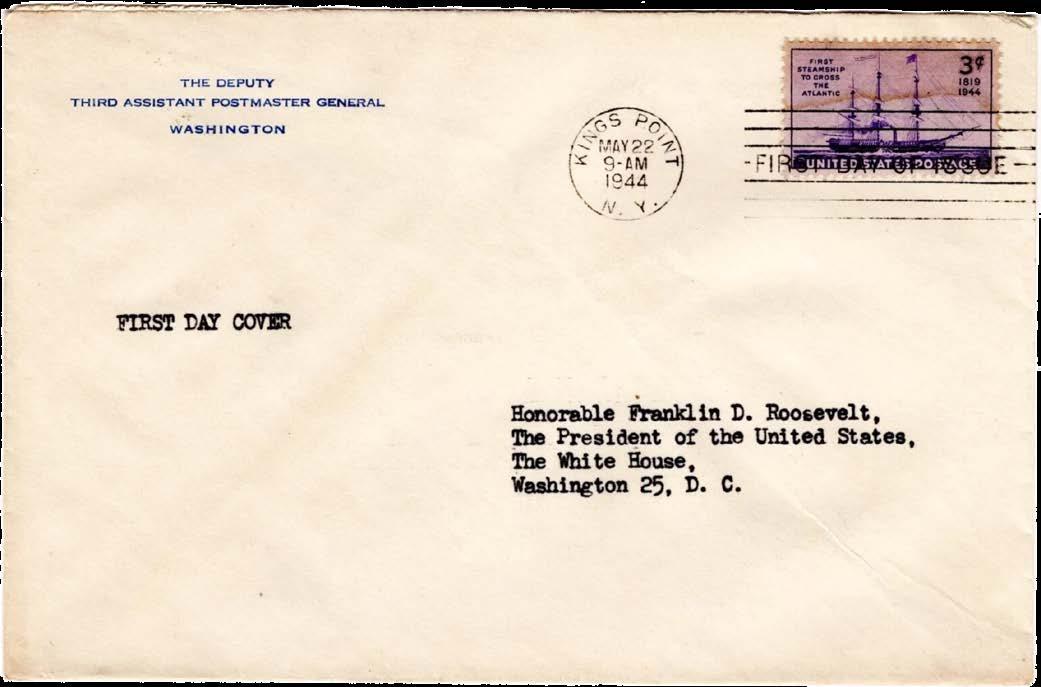
FDR’s favor FDC with signed letter from Deputy Third Assistant PMG Roy North.
steamship that was purpose-built for regularly scheduled transatlantic crossings and so inaugurated the era of the transatlantic ocean liner.
In the United States, the SS Adriatic became the largest ship in the world when launched in 1856. Powered by two massive steam engines, whose pistons were 100 inches in diameter, its two side-mounted paddle wheels were each 40 feet in diameter and 12 feet in width. However financially the Adriatic was a failure, especially once Congress dramatically reduced its mail subsidy. Nonetheless, the Adriatic was employed for carrying transatlantic mail and is memorialized on a beautifully engraved postage
Figure 7.
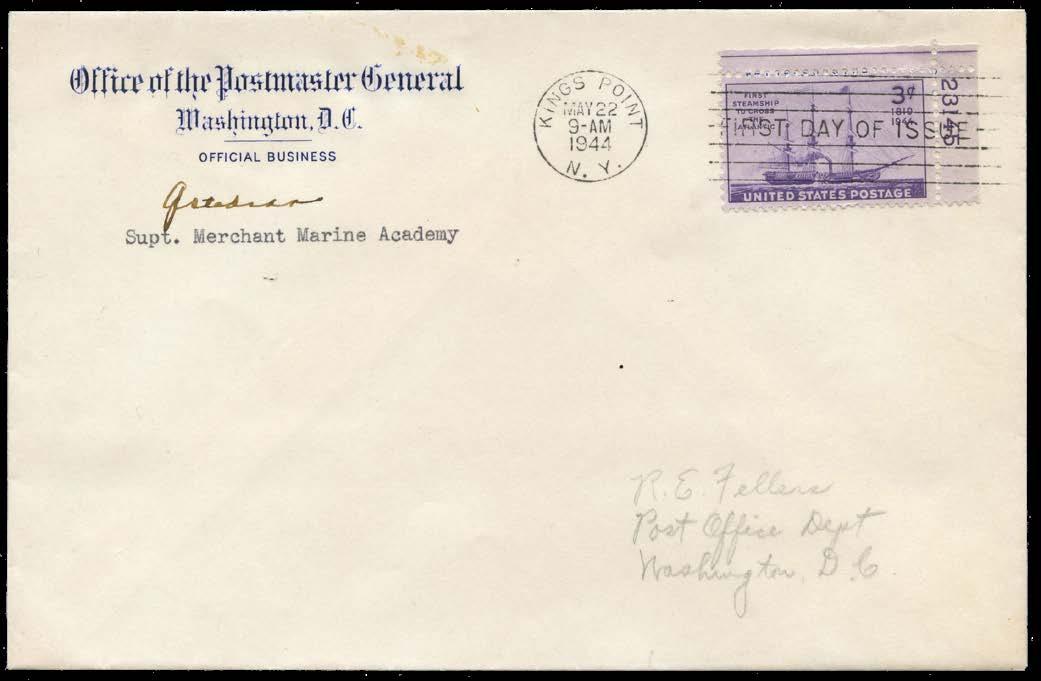
8. Favor FDC on official PMG stationery, signed by the Superintendent of the Merchant Marine Academy.
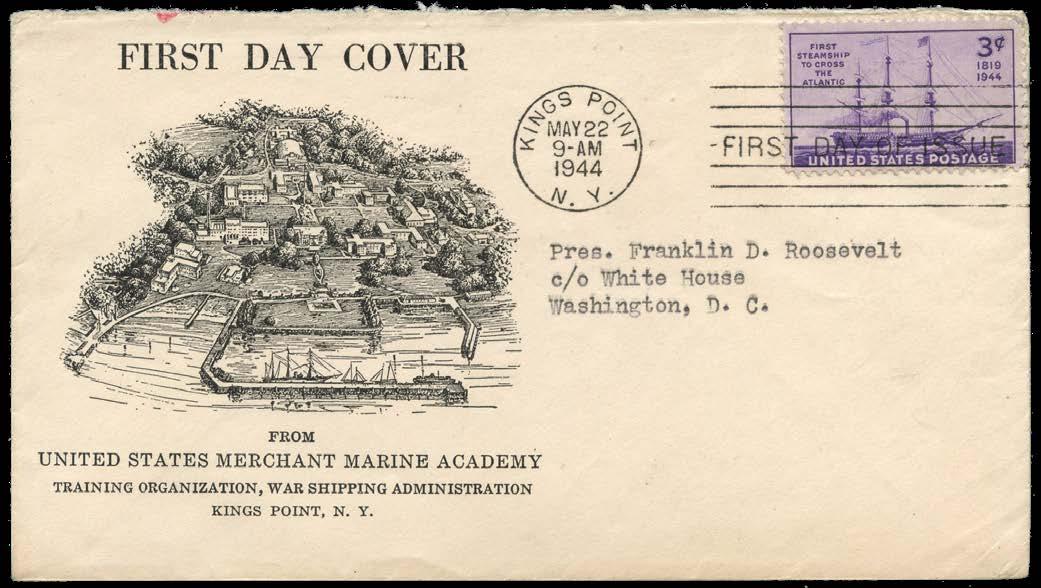
stamp from the 1869 pictorial series. This is shown in a plate proof on card from my reference collection (Figure 10). Note especially the Adriatic’s massive side-mounted paddle wheel.
Today, the world’s economy is heavily dependent on sea transportation. Global trade has transformed our everyday lives, with container shipping coupled with the Suez and Panama Canals greatly improving efficiency. There have been numerous technological developments, including screw propulsion, steam turbines, and the use of internal combustion engines, to name a few, since the Savannah became the first steam-powered vessel to cross the Atlantic in 1819.
Figure
Figure 9. FDR’s FDC for the Savannah stamp from the United States Merchant Marine Academy.
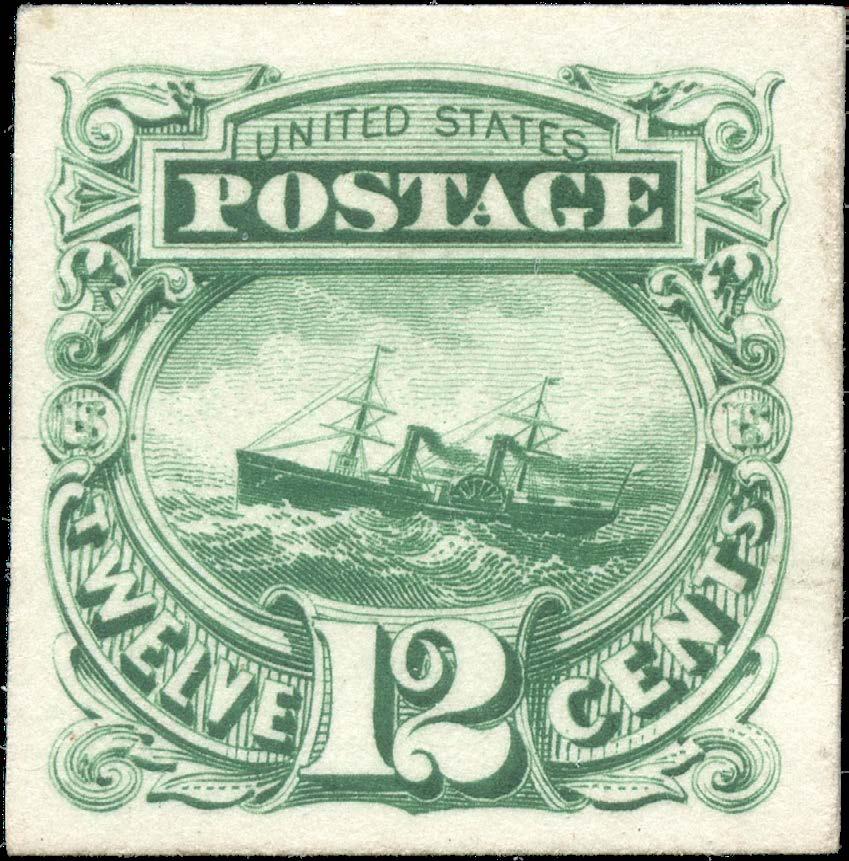
Figure 10. Plate proof showing SS Adriatic and its massive sidemounted paddle wheel.
References
1. Max G. Johl, The United States Commemorative Postage Stamps of the Twentieth Century, Volume II 1935–1947, H. L. Lindquist: New York, 1947, pages 247–248.
2. Brian C. Bauer, Franklin D. Roosevelt and the Stamps of the United States 1933–45, Linn’s Stamp News: Sydney, Ohio 1993, pages 301–303.



compiled by Kim D. Johnson
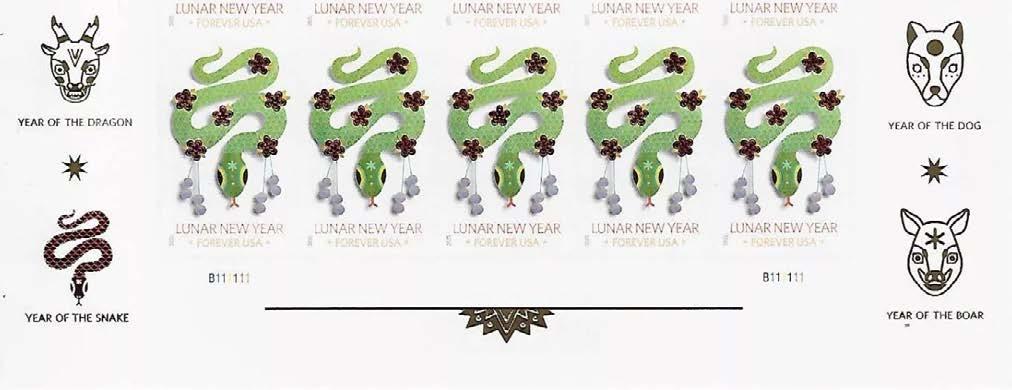
#???? Year of the Snake B111111 ‡ ‡ LL LR 2r x 2c 1,2,3,4* 3

3 #???? Love B11 UL UR LL LR 2r x 4c 1,2,3,4,5,6,7,8*
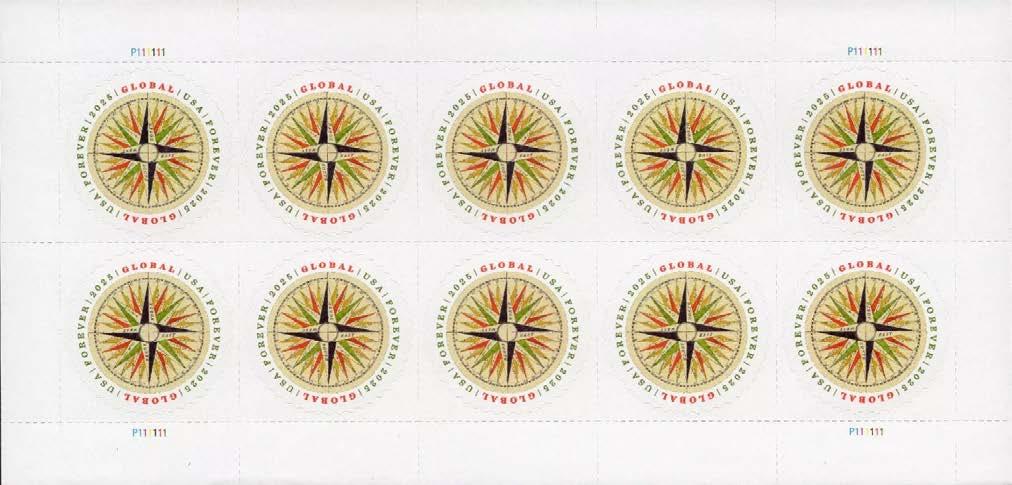

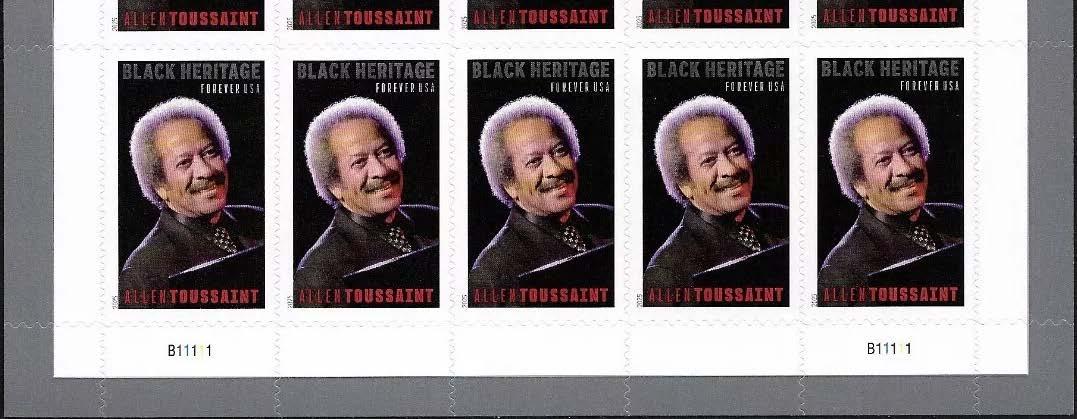
Toussaint
COORDINATORS: Members are invited to report their findings to the appropriate coordinator.
All issues through 1980
Sheet stamps after 1980
Kim D. Johnson
310 E N 3rd Street
Georgetown, IL 61846
Jim Cochrane P.O. Box 2009
Great Bend, KS 67530
Coil stamps after 1980 Jill Ambrose PO Box 54622 Cincinati, OH 45254
Booklet stamps after 1980 Michael O. Perry P.O. Box 1194
Rainier, OR 97048
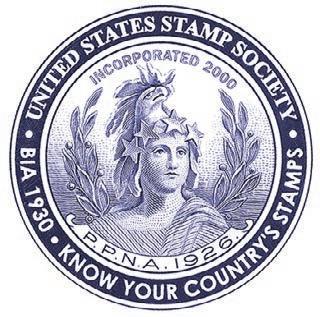
Report of the Executive Secretary
APPLICATIONS RECEIVED FOR JANUARY 2025
17599 Ryan Lee, Portsmouth, RI
17600 Fumiaki Wada, Miyawaka, Japan
17601 Doug King, Chatham, ON, Canada 17602 Michael Tanner, Henderson, NV 17603 James Martin, Noblesville, IN
APPLICATIONS PENDING
17595–17598
NEW MEMBERS
17589–17594
RESIGNED
7585 Eben W. Graves 11614 Jon A. Schoonmaker
13288 Randall G. Lanford
13589 Frank Lapetina 14690 Murray Eskenazi 14931 Roy Gelder
15047 Kevin Konetzni
15921 Charles C. Wooster 16411 Stephen Endicott 16651 Jossie Hernandez 16774 Stanley Christmas 16792 James A. Allen
16939 Lawrence Sherman 16967 Jeffrey Anderson
17013 Martin WMiller
17035 Richard St. Clair
17084 Marc Irish 17105 Majid Hosseini
17179 James Belcher
17240 Charles Hansen
17325 Daniel Edwards
17370 Paul Sobon 17424 Tim Fahlberg 17462 David Goodhart 17467 Chad Payne
17475 Andrea Miller 17512 Michael Miller 17519 John Mariani 17529 Mike Rogowski 17537 Mike Boush 17548 Juergen Kuseler 17566 Doc Pepper
DECEASED
8877 Jim Dempsey 8939 John Shue 9440 Eloise Hintersteiner 14440 Calvin Ramsey
DROPPED
4130 Millard H. Mack 6783 George F. Pollock Jr. 7714 William W. Burkhardt 8151 Steve Levine 8536 Robert Bruce Wilson 9273 Victor A. Spector 10486 Lawrence Schwartz 10757 Wayne B. Dowdey 10823 Aubrey Wright 10996 John P. Greenwood DDS 11890 John J. Cryan 12186 Terry L. Boyer 12522 Charles C. Gilbert III 12645 Thomas Ciaccio 12706 Edmond E. Bates Jr. 13044 Robert P. Wollert
13547 Jack Metcalf
13567 Robert F. Bruhn Jr.
13595 Greg Johnson
13674 William J. Walsko
14029 Bernard W. Pawlowski
14247 Howard F. McDermott
14751 David St. Maurice
14959 Paul J. Hopkins
14977 Edward Pulse Jr. 14986 Richard Bibeau
15208 David Willig
15396 Brian Eagmin
15470 Leonard Kortekaas
15650 John Mann
15707 David J. Reedy
15811 Joseph B. Uicker
16049 Joseph G. Leadon
16086 Clifford A. Mestel
16191 Charles W. Troutman
16194 Edward Field
16308 Kenneth Kendrick
16454 Richard Jackson
16488 Edwin L. Marsalis, Jr.
16493 Donald F. Dreisbach
16546 James C. Webb
16637 Charles Epting
16705 Mike Stern
16748 John D. Dion
16819 Craig Marshall
16868 Tedd W. Harwood
16930 George Bon
16940 Bill Arvidson
16942 Morris Jacobs
16970 David S. Durbin
16984 Francisco de la Torre 17006 Russ Liachoff
17075 Thomas McGrath
17108 Leon Komkov 17115 Marty Longo 17121 Jack Myers 17123 Mark Swan
17149 Frank Weidner 17160 Randy McMahill 17161 Damon Pritchett 17183 Ron Singer
17278 Jean Klimaszewski 17279 Stephen DelBonis
17309 Thomas Schilling
17341 Nathan Kobland
17350 James Clark
17354 Stuart Winett Le'Vene
17362 Chuck Courville
17369 Tim Thomas
17388 Steve Billings
17401 Mario Mangini
17416 Don Pauley
17428 Stephen Pollard
17452 Leon Martin
17461 Charlotte Hemingway 17483 Larry Hanson 17487 Mike Shofner 17489 Matthew Carlson
17501 William Youngerman 17504 Dwayne Bagley 17505 David Stokes
17523 Lamar Lewis 17526 Gary Sommer
17527 Michael Brookbank 17531 Jamie Yakes 17532 Marlonn Baker 17536 Michael Hassien 17540 Sharon McDonald 17541 Albert Altarac
17542 Lashaye Morrow 17554 Jean Lhuillier 17582 James Armstrong
Richard Diskin
Ed Kozelka
Reed Roholt
Annual Dues Renewal Report
Thanks to all who have renewed their memberships – both online and via snail mail. “Resigned” indicates members have notified us of changed direction or circumstances. “Dropped” means we have not had any response to numerous attempts to contact. Reinstatement is easy – just contact Bob Rufe: execsecretary@usstamps.org or USSS, Box 1602, Hockessin DE 19707-5602.
Classified Advertising
USSS MEMBERS are entitled to two free ads of up to 40 words each year. Other ads are 10¢ a word, payable in advance. For 6 insertions, take a 5% discount; for 12 insertions, take a 10% discount. Ads with [1141] at the end expire with this issue. Make checks payable to USSS. Send copy and check to The United States Specialist, 9038 E. 25th Dr., Denver CO 80238. Free member ads may be emailed to: editor@usstamps.org. Emailing ads saves substantial time for you and the Editor and avoids errors .
WANTED
BUYING IMPERF FARLEYS with GUM. ALL offers welcome! Frank P Geiger Senior - APS Life since 1968 and ASDA since 1974. Phone: 787-6896879–FrankPGeigerSr@gmail.com–PO Box 3442–Pinehurst, NC 28374. [1150]
WANTED—PAYING TOP DOLLAR FOR C-13, C-14 and C-15 singles, both mint/used. Also interested in multiples, flight covers, Zeppelin-related posters, advertisements, etc. Graf Zeppelin specialist. Rob Lehmann email: diecasttoys@yahoo.com or call: 240422-0118. [1150]
WANTED - PHOTO COPIES OR PURCHASE OF Non-Philatelic covers with 80¢ Diamond Head stamp. Plate Selvage with # MUST be attached to 80¢ stamp. Contact Krupnick - 2432 NE 22nd Terrace Ft Lauderdale FL 33305 - cell: 954-547-0544 [1143]
WANTED TO PURCHASE #1053 HAMILTON $5 Commercial Usages. No simply registered bank tags. Especially need use to foreign destination. Also doing a survey so scans appreciated. Doug Weisz weiszcovers@gmail.com, 773-914-4332. 33 W Ontario St. #48A Chicago IL 60654. www.douglasweisz.com [1152]
SCOTT 1246—5¢ KENNEDY. MAY 29, 1964 postmarks sought. No Boston. Looking for small town postmarks. Uncacheted OK. Henry Scheuer, P.O. Box 535, Madison Square Station, New York, NY 101590535 [1142]
WANTED: 1280c DULL GUM BOOKLET PANES with partial plate number. Buy or trade. Clay Stabler, c.stabler@comcast.net. [note corrected email] [1142]
TRADE: UNFOLDED BOOKLET PANE positions and PLATE NUMBERS. Send want list to Clay Stabler, c.stabler@comcast.net. [note corrected email] [1142]
WANTED: COMMERCIAL COVERS OF (25¢) eagle water-activated coils U.S. #3844-3853 for exhibit. Also, looking for 39¢and 41c official coils on commercial covers. Rob Washburn, P.O. Box 840, Skowhegan, ME 04976. Email: stamps@beeline-online.net. [1141]
WANTED: SCOTT 905 “WIN THE WAR” POSTAL history—No patriotic covers please—Shapiro, P.O. Box 3211, Fayville, MA, 01745 or scans to coverlover@gmail. com. [1141]
CANAL ZONE WANTED. MINT, USED, COVERS, Stationery, Errors, Varieties. Write, Email or Call: Bruce Hecht, PO Box 474, New Hyde Park, NY 11040. bhecht@optonline.net 516–428–7817 [1141]
RYUKYUS WANTED. MINT, USED, COVERS, Stationery, Errors, Varieties. Write, Email or Call: Bruce Hecht, PO Box 474, New Hyde Park, NY 11040. bhecht@optonline.net 516–428–7817 [1141]
WANTED: SCOTT 532 ON COVER WITHOUT Schermack private perforations. Also, any other unusual Washington-Franklin offset material (Scott 525–536). Please send description and price to Andrew Kelley, stamps@andrewkelley.net [1141]
WANTED: SCOTT 611 WITH SCHERMACK TYPE III perfs used on cover. Scans or Purchase email: jonathan.lebreton@gmail.com [1142]
WANTED: INDEPENDENT POSTAL SYSTEMS of America (IPSA) operated from 1970s—1980s. Need any USED material and Mint Sheets. Any correspondence, evidence of stamps used on mail, “magazine door hanger bags,” uniform items, etc. Contact J. Dale Shively at jdshively@icloud.com [1142]
SEEKING USS INDEPENDENCE STAMP Similar to #4703 USS Constitution stamp. Bernard Wojnowski; 64 Mariner Rd.; Vineyard Haven, MA 02568; bewojo@gmail.com [1142]
FOR SALE
SEND $3.00 FOR A TYPED LIST OF HIGH QUALITY stamps. $5.00 off first order. Satisfaction guaranteed. Reed Roholt, PO Box 1006, Beaver UT 84713[1144]
SELLING U.S. PLATE BLOCKS MNH AND MH from Scott Number 900 to 1975, Commemoratives, Special Delivery, Airmail. 50% of Durland plus postage. Jim Opp, 9130 Knollwood Dr. N., Stillwater, MN 55082 [1142]
JOINT ISSUE AND MUTUAL INTEREST collection mounted in 2 heirloom albums. Nice collection with cat. value over $850.00 sell for $379.00. Reed Roholt, P.O. Box 1006, Beaver, UT, 84713. Satisfaction guaranteed always. [1441]
U.S.A. AIR MAIL COLLECTION IN A hingeless heirloom album. 70% mint, 30% used includes First Flight covers and much more. Cat. value over $2000.00. Sell for $1000.00 Reed Roholt, P.O. Box 1006, Beaver, UT, 84713. Satisfaction guaranteed always. [1441]
United States Possessions: Postage Due Stamps and Covers presents the story of Postage Due stamps used in the major possessions or territories of the United States. Written from a stamp collector’s perspective, the authors address the challenge of identifying the myriad of Possession Postage Due stamps by concentrating on stamp identification while also covering the Postage Due issues of Cuba, the Danish West Indies, Puerto Rico, the Panama Canal Zone, the Philippines and more. In addition to the text, the monograph contains over 300 illustrations and five appendices which provide information to supplement and further explain key points. In many cases, the information presented is new or, if previously reported, organized in a new manner to help the reader understand the complexity of the Possession Postage Dues.
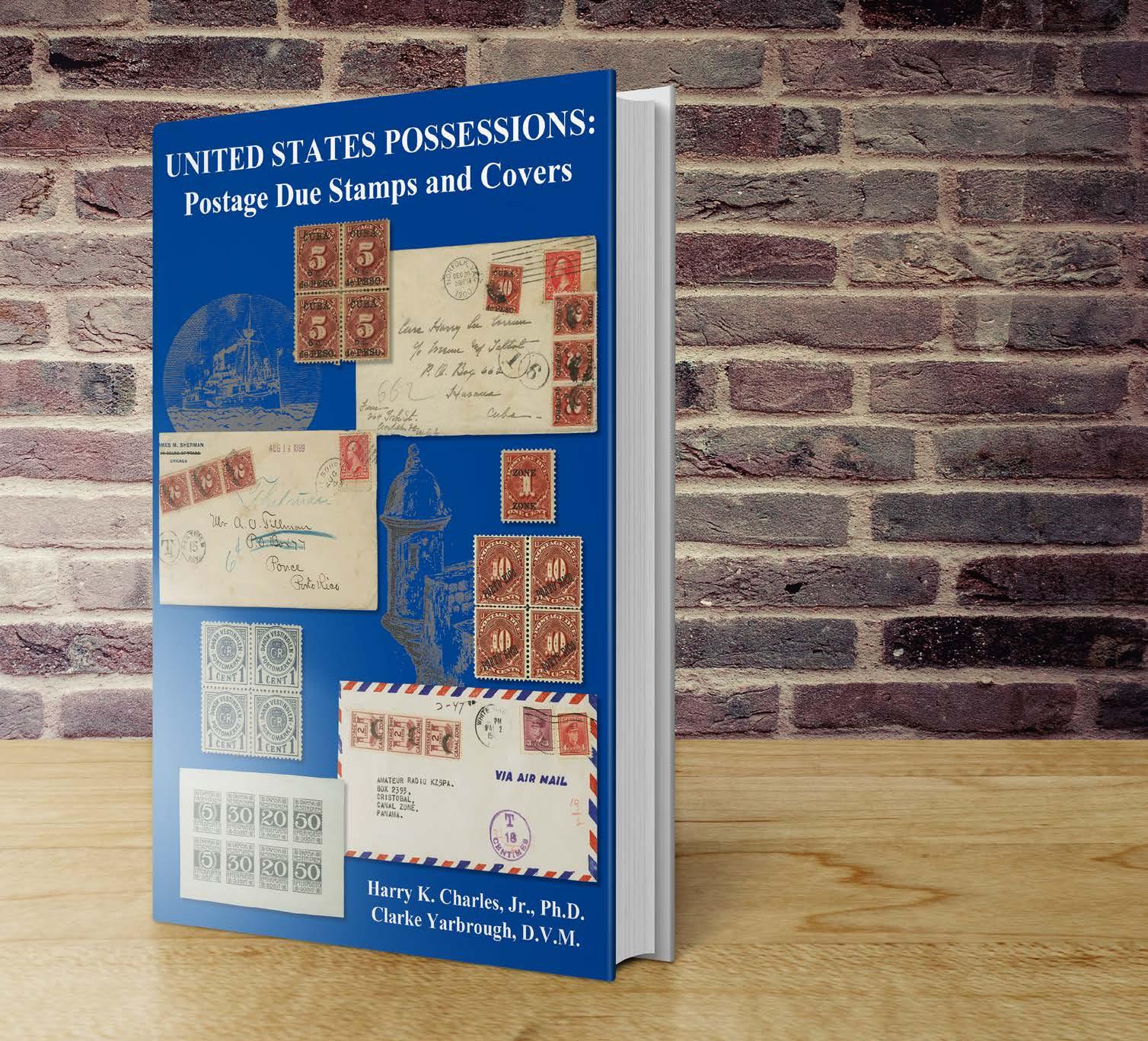
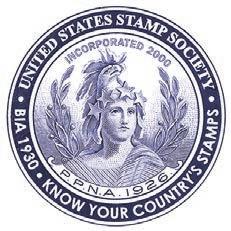
United States Possessions: Postage Due Stamps and Covers Hard cover, 352 pages, 6-in x 9-in.
Member Price: $39 U.S. postpaid Non-Member Price: $43 U.S. postpaid Purchased online at: www.usstamps.org/store/ or by mail to: Executive Secretary, P.O. Box 1602, Hockessin, DE 19707-5602
Index of Advertisers
American Plate Number Single Society (www.apnss.org) .................................................... 130 Armen Hovsepian (www.USatFACE.com) 129 Boston 2026 (www.boston2026.org) 101 Mountainside Stamps, Coins and Currency (www.mountainsidestampsandcoins.com) ........ 112 Precancel Stamp Society (www.precancels.com).......................................... 112
Richard Friedberg (www.friedbergstamps.com). .............................. 119
Robert A. Siegel Auction Galleries (www.siegelauctions.com) ................................... 130
Scott A. Shaulis (www.shaulisstamps.com) 129 U.S. Philatelic Classics Society (www.uspcs.org) 112
United States Stamp Society (www.usstamps.org)............................... 139, Covers
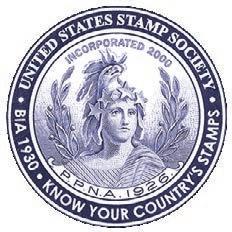
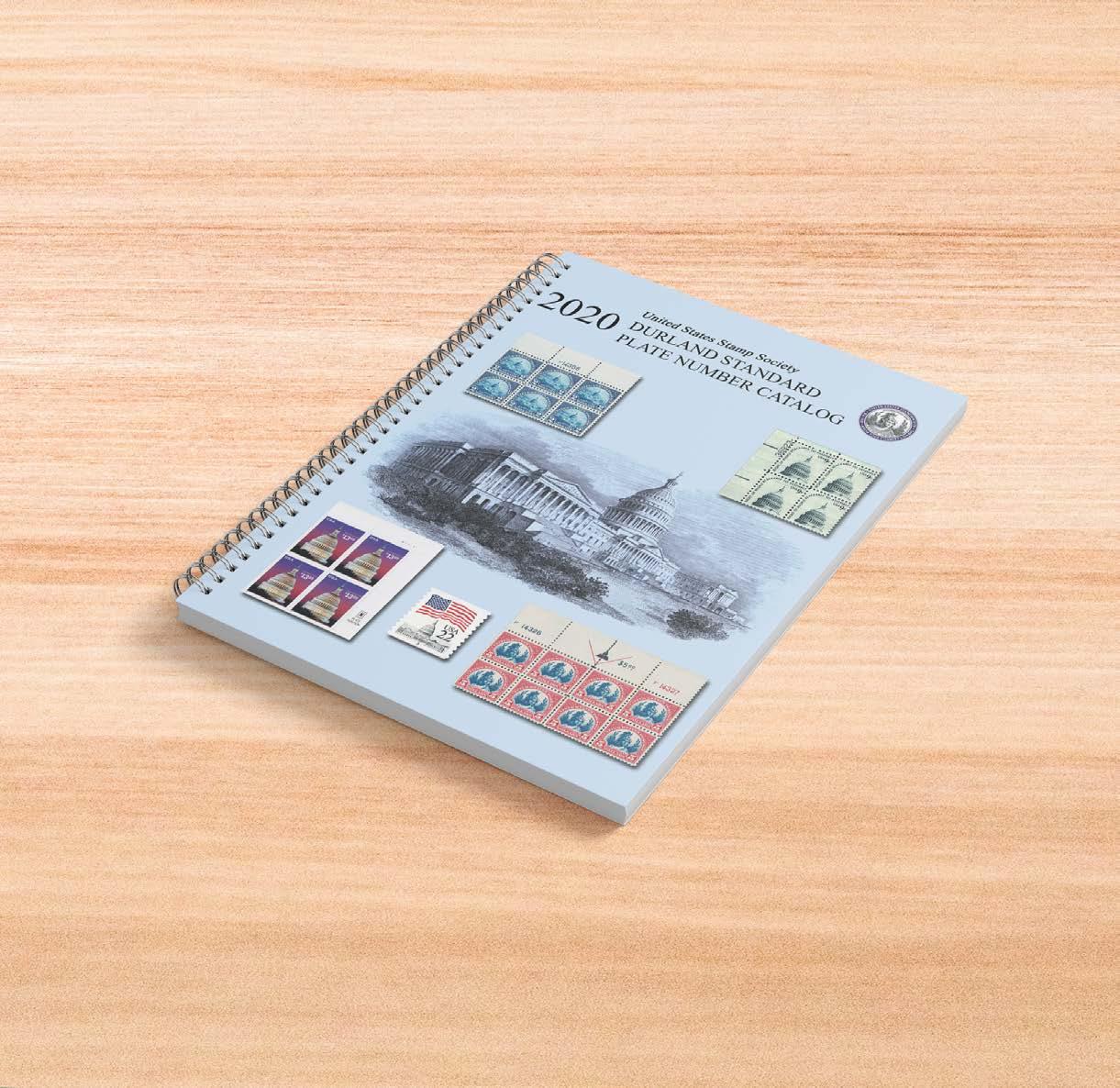
United States Stamp Society
The 2020 edition the Durland Standard Plate Number Catalog provides the most comprehensive research source for plate number information on United States postage and revenue stamps, including tax-paid revenue stamps, with listings for overprinted Possessions postage, Allied Military government stamps and other back-of-the-book stamps, dummy and test stamps, MDI "Blue Cover" booklets and partial plate numbers on booklet and coil stamps.
2020 Edition of the Durland Standard Plate Number Catalog 448 pages available in Perfect Bound or Spiral Bound format. Member Price: $40 US plus shipping Non-Member Price: $45 US plus shipping
Order Online at: www.usstamps.org/store
